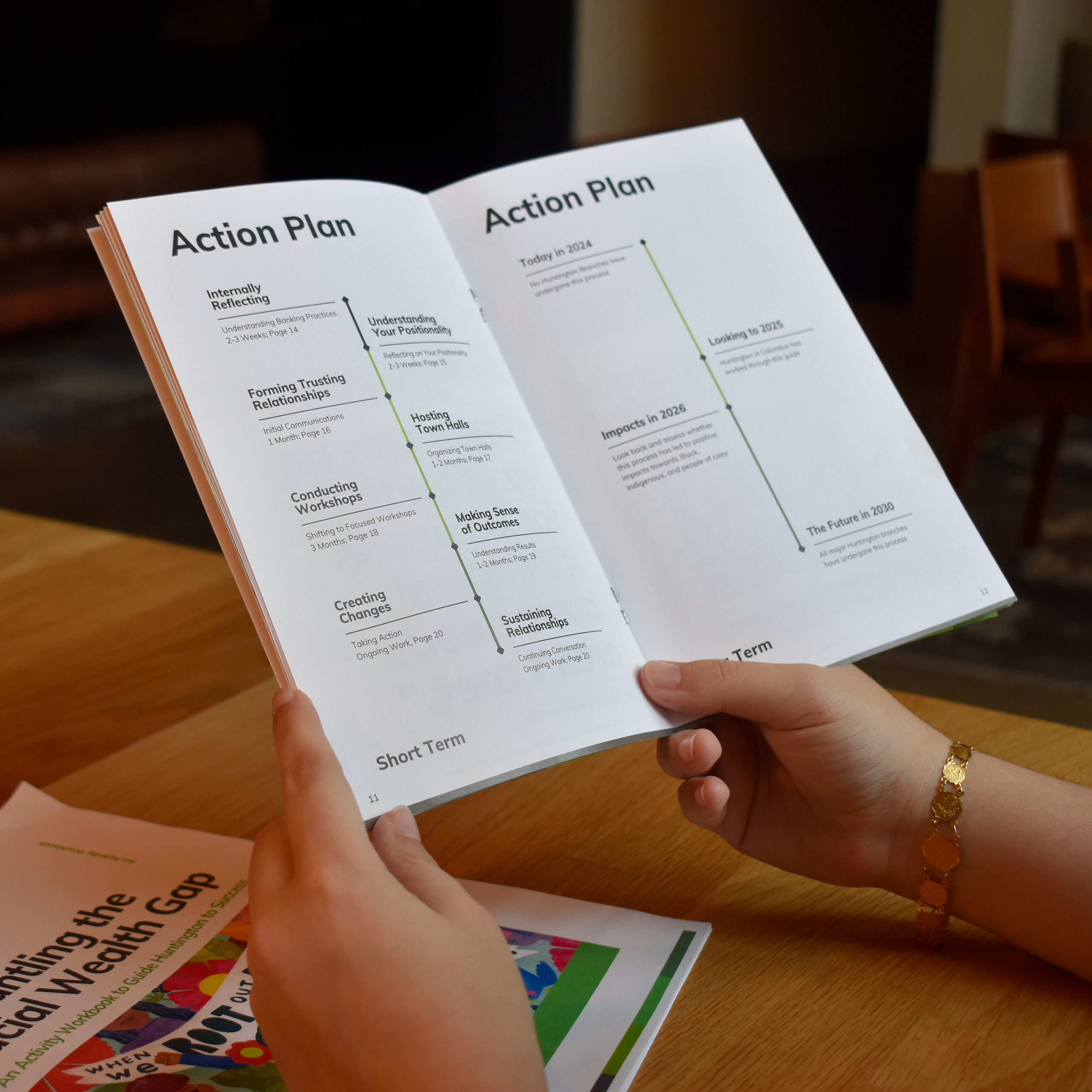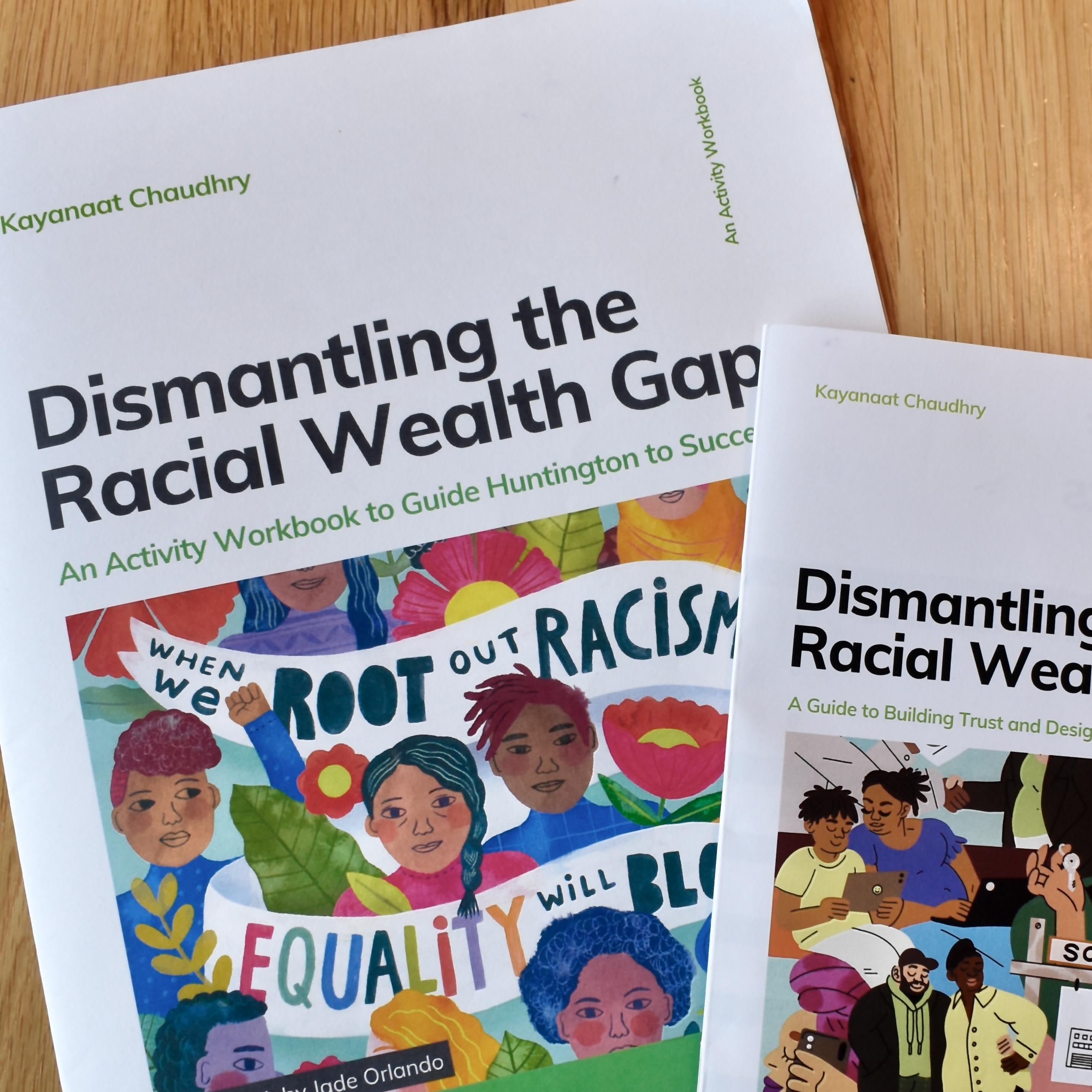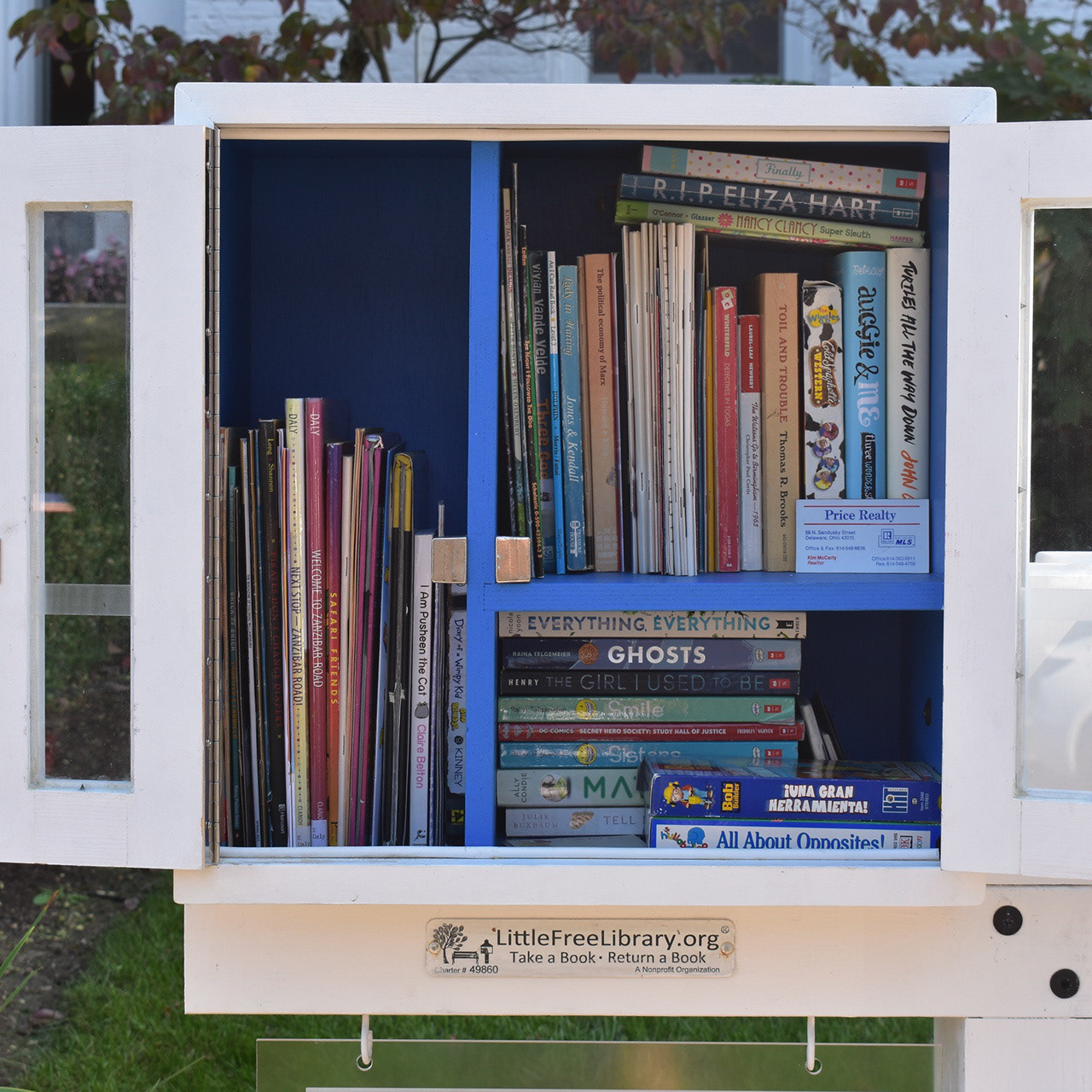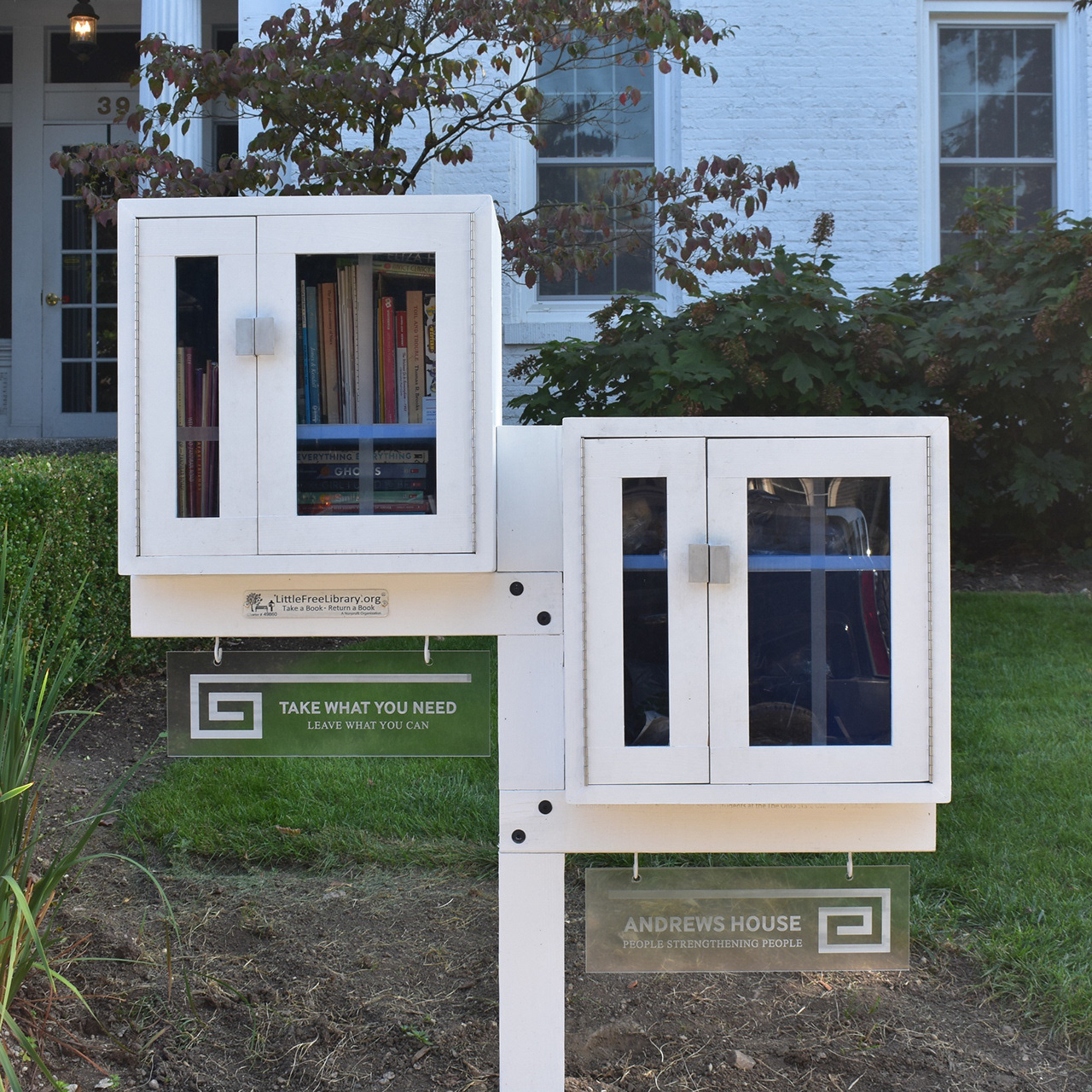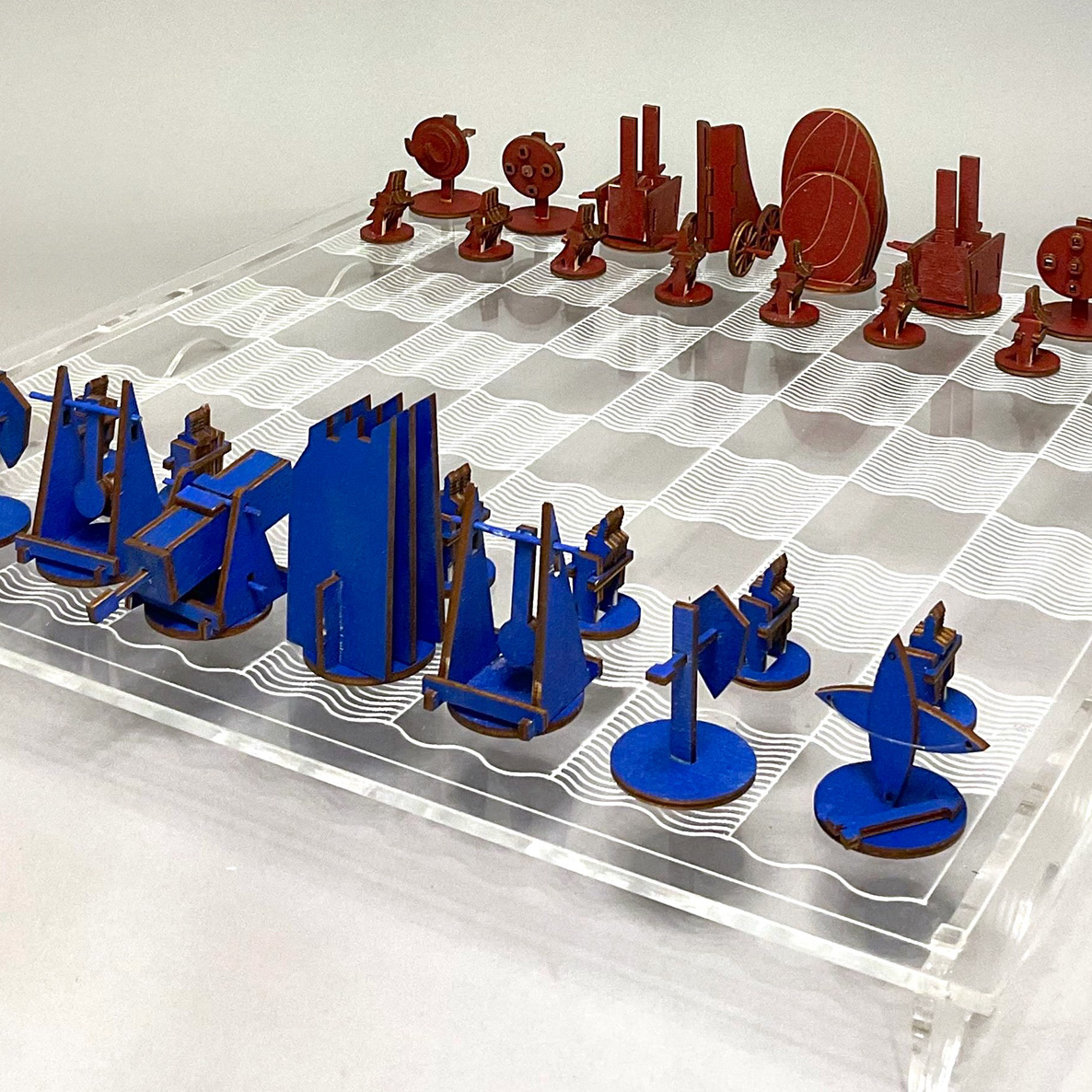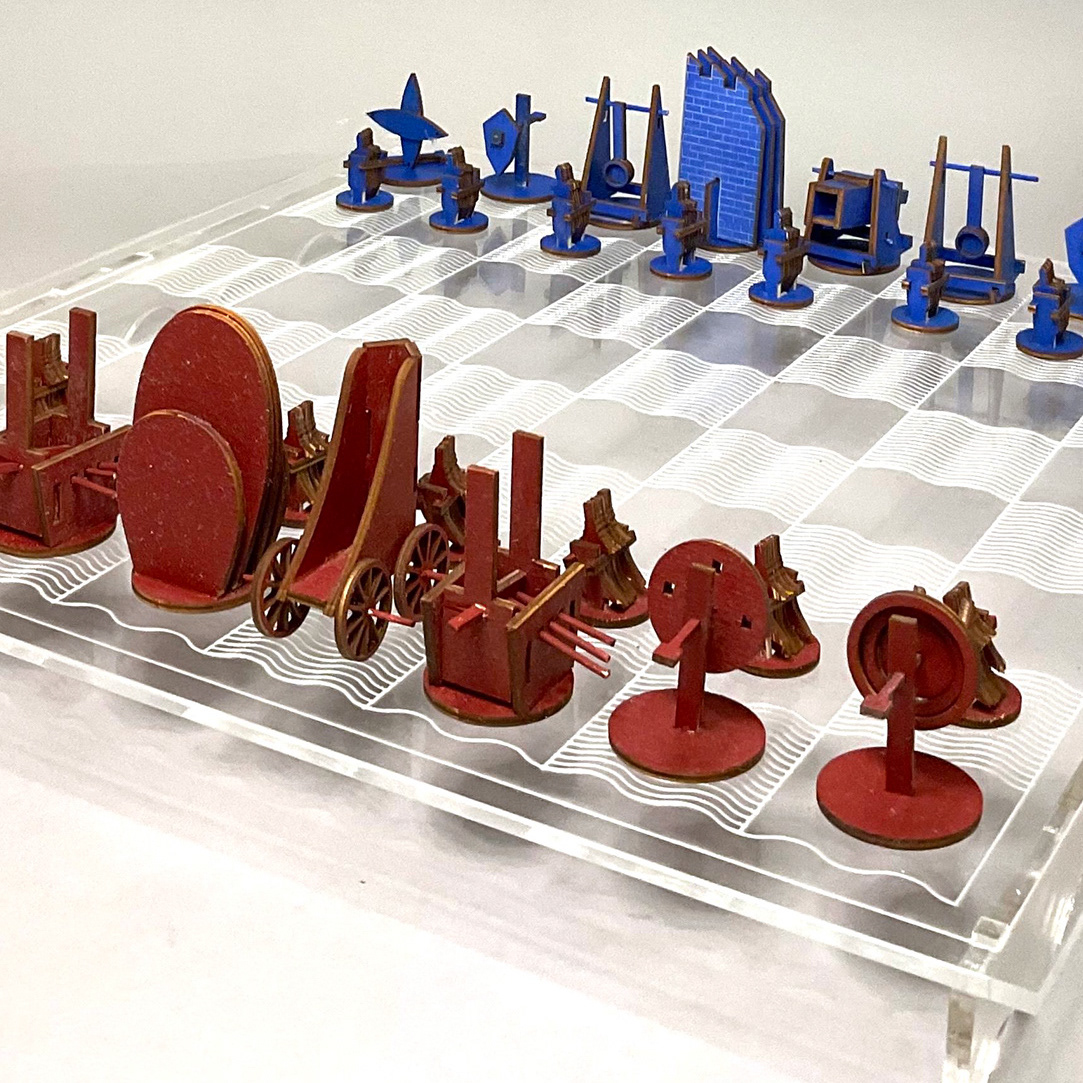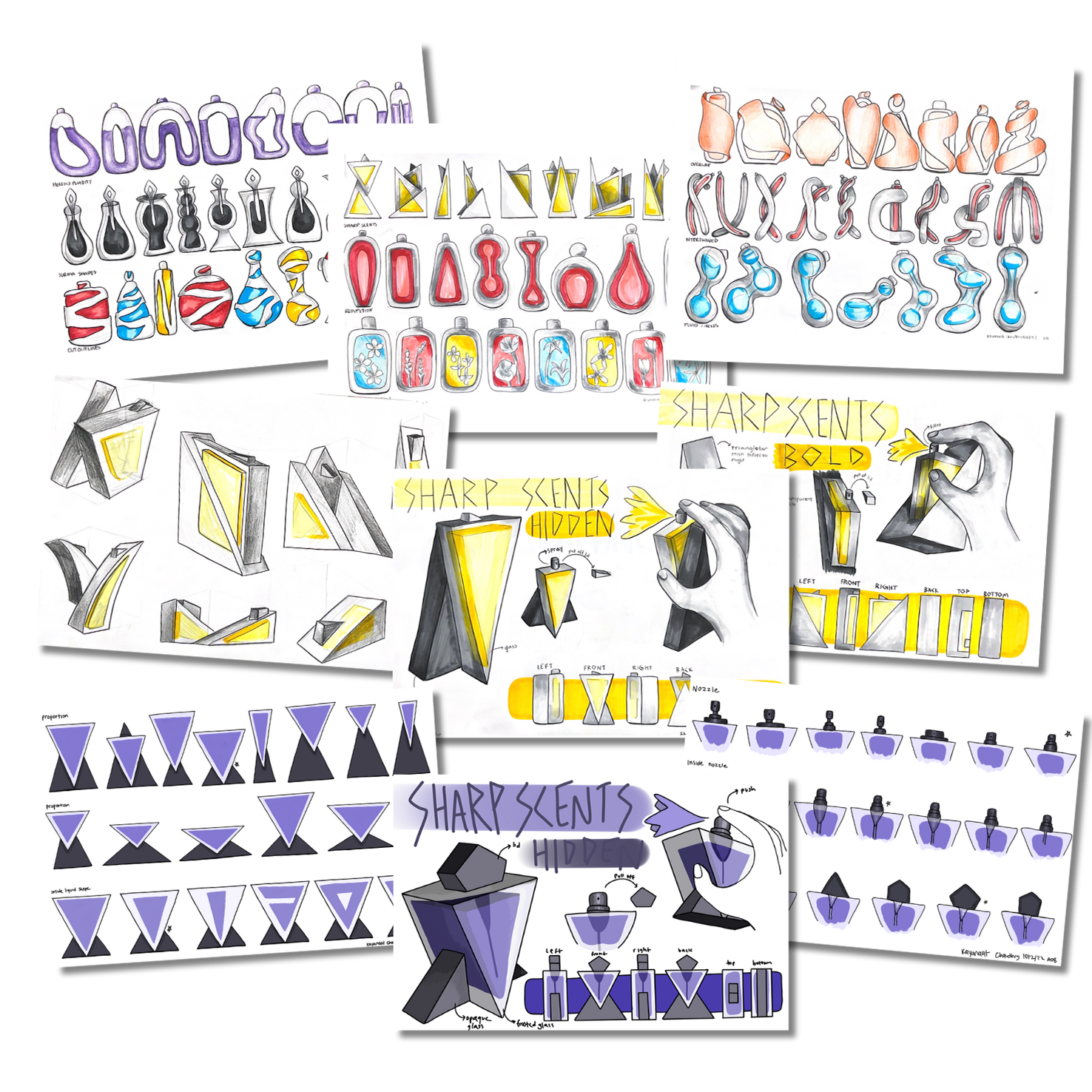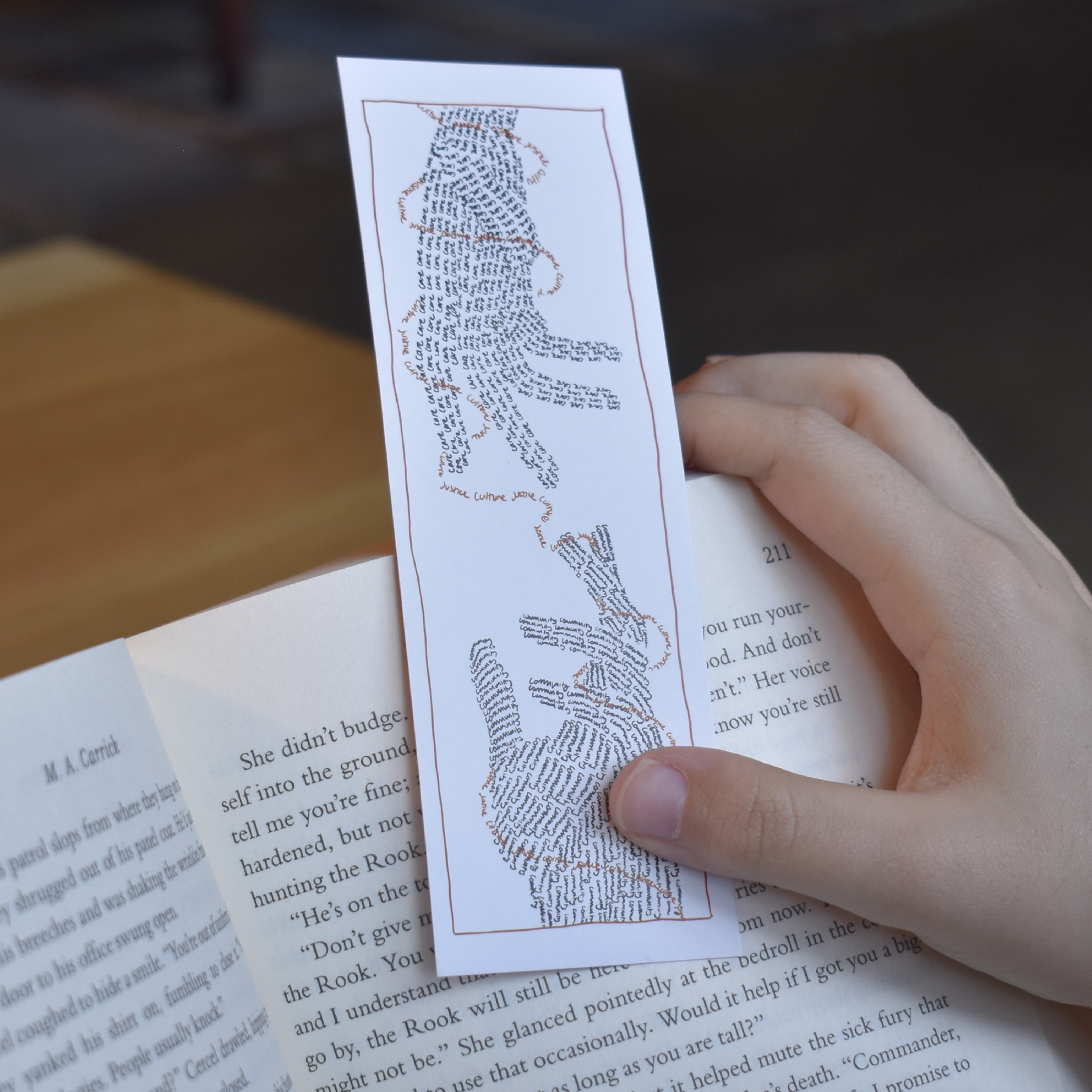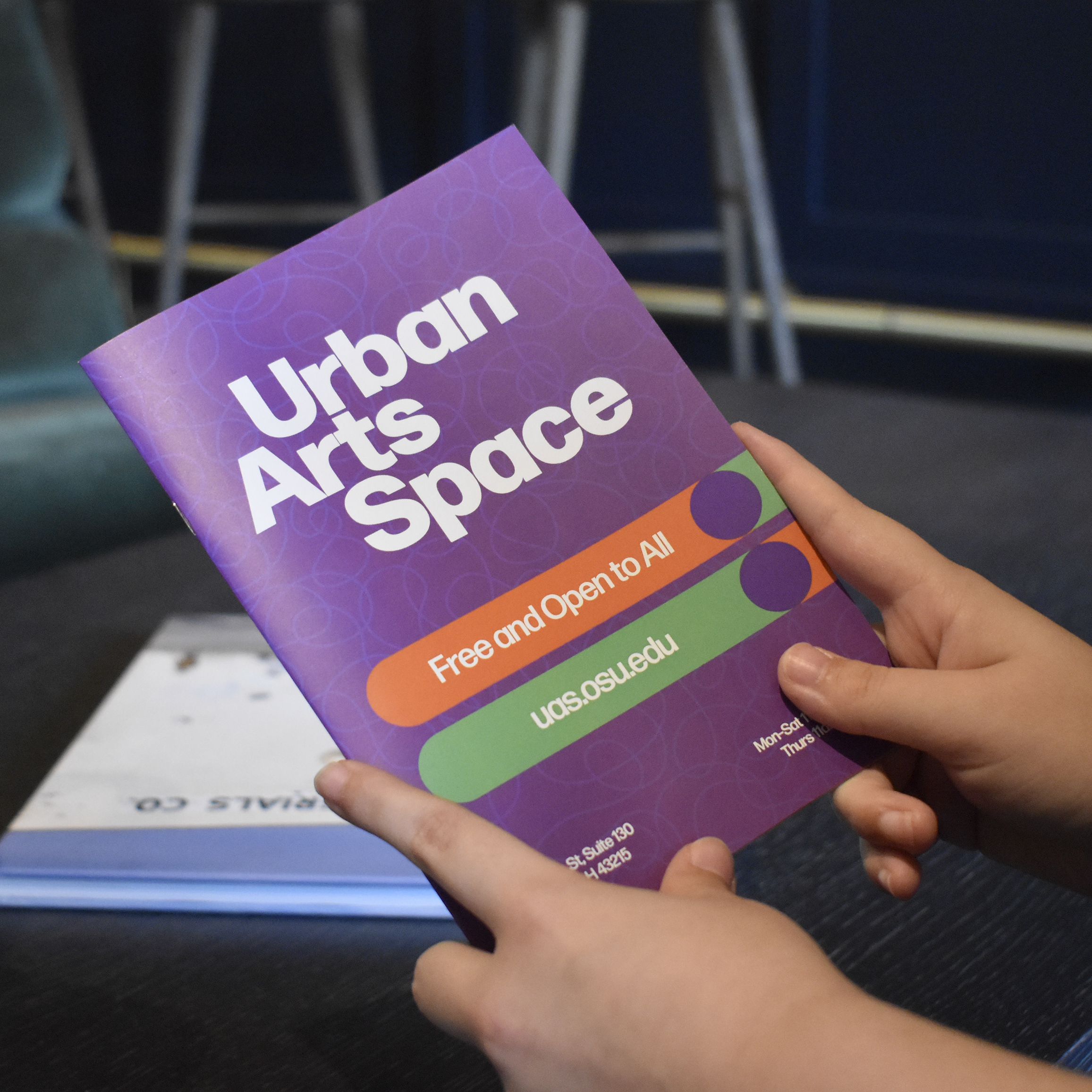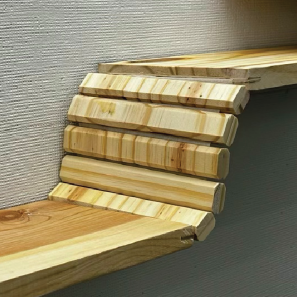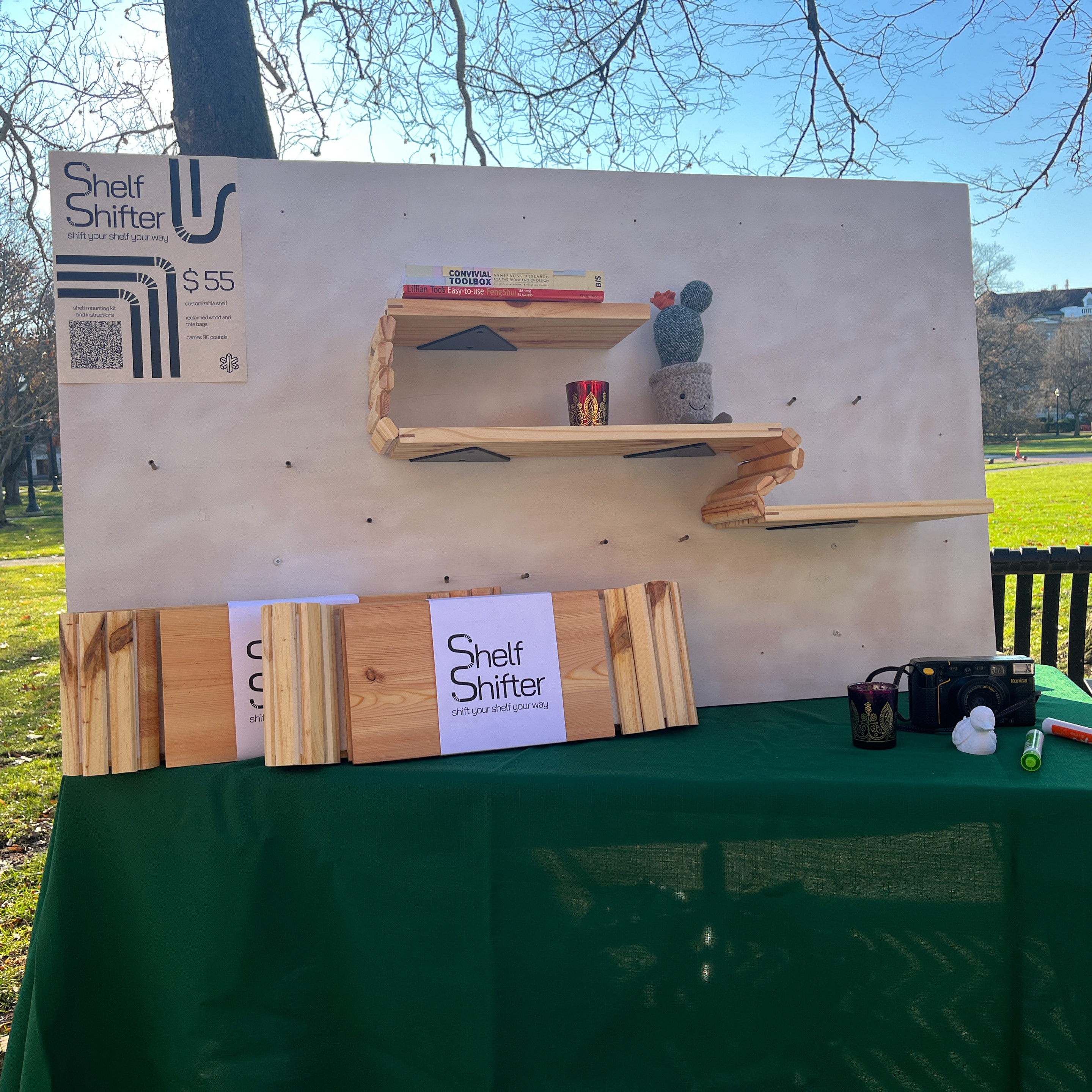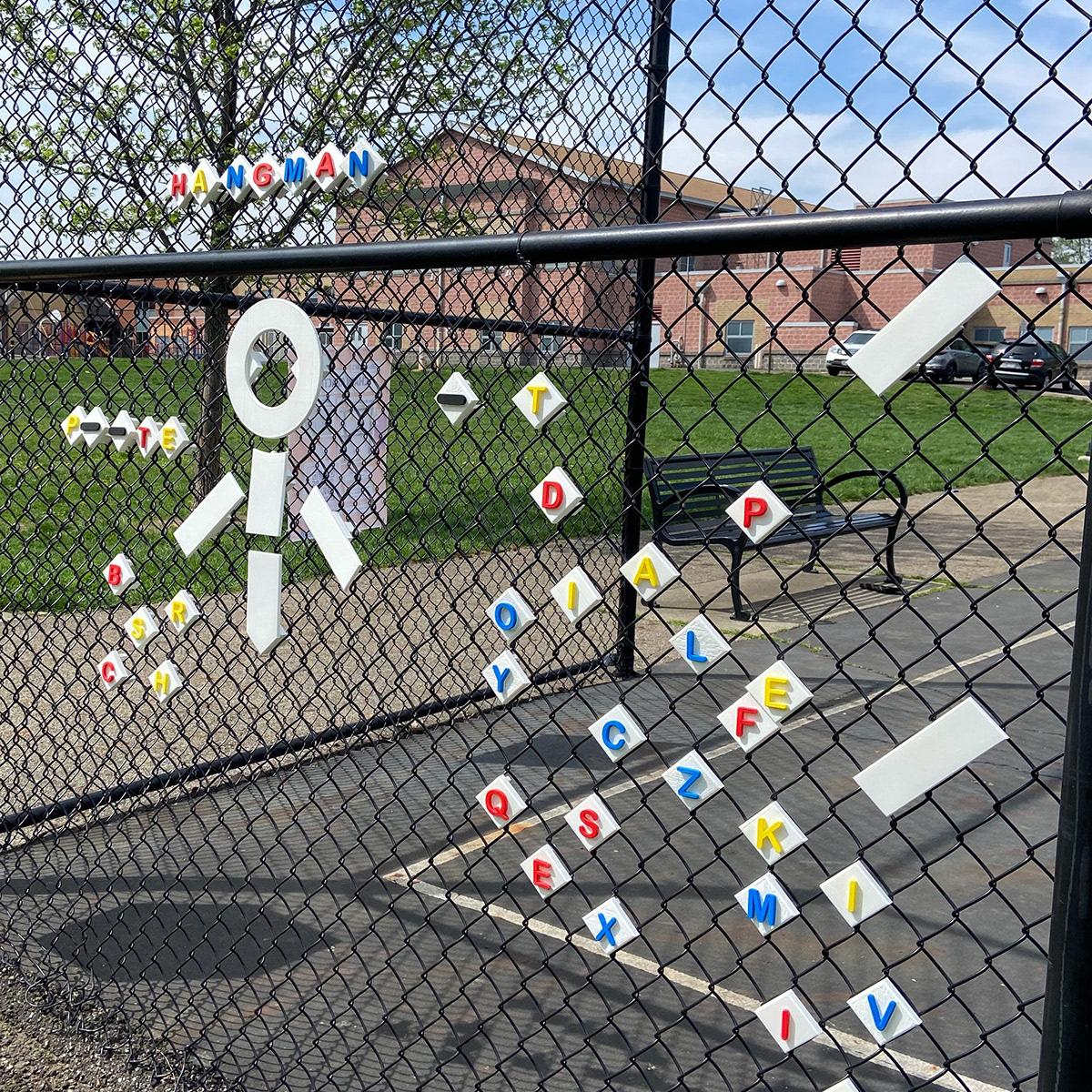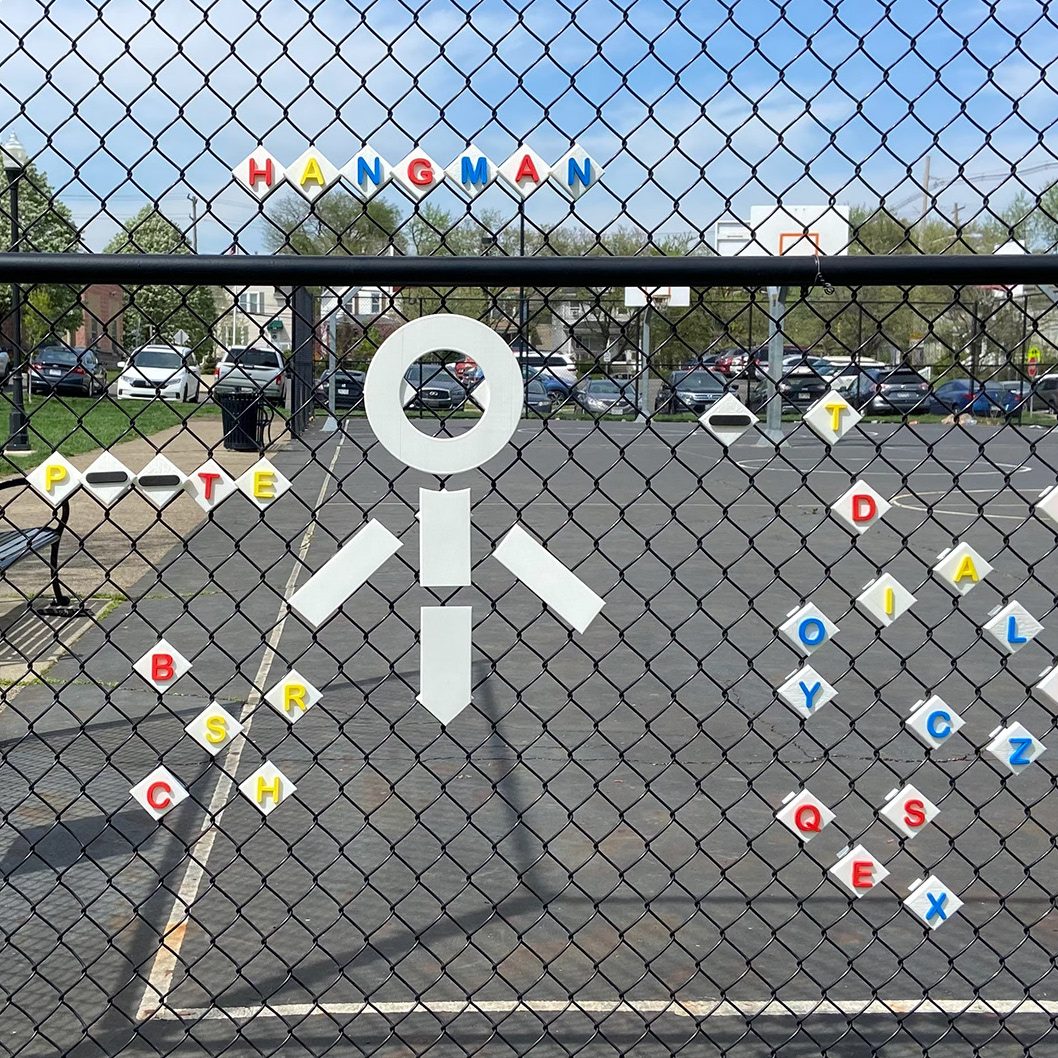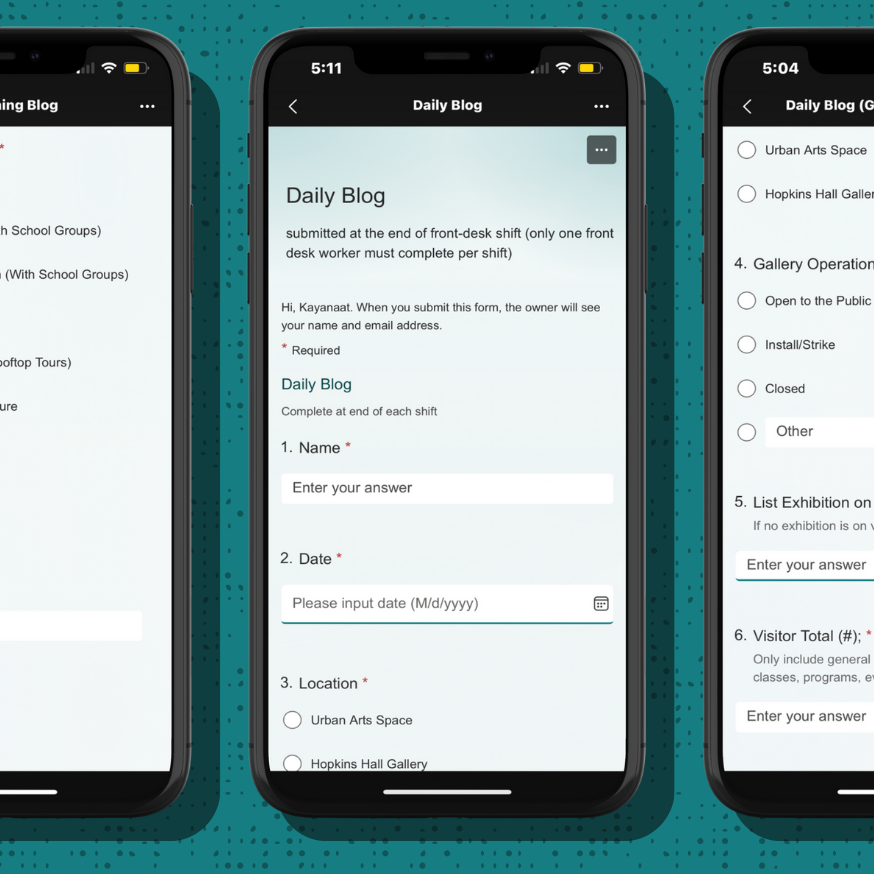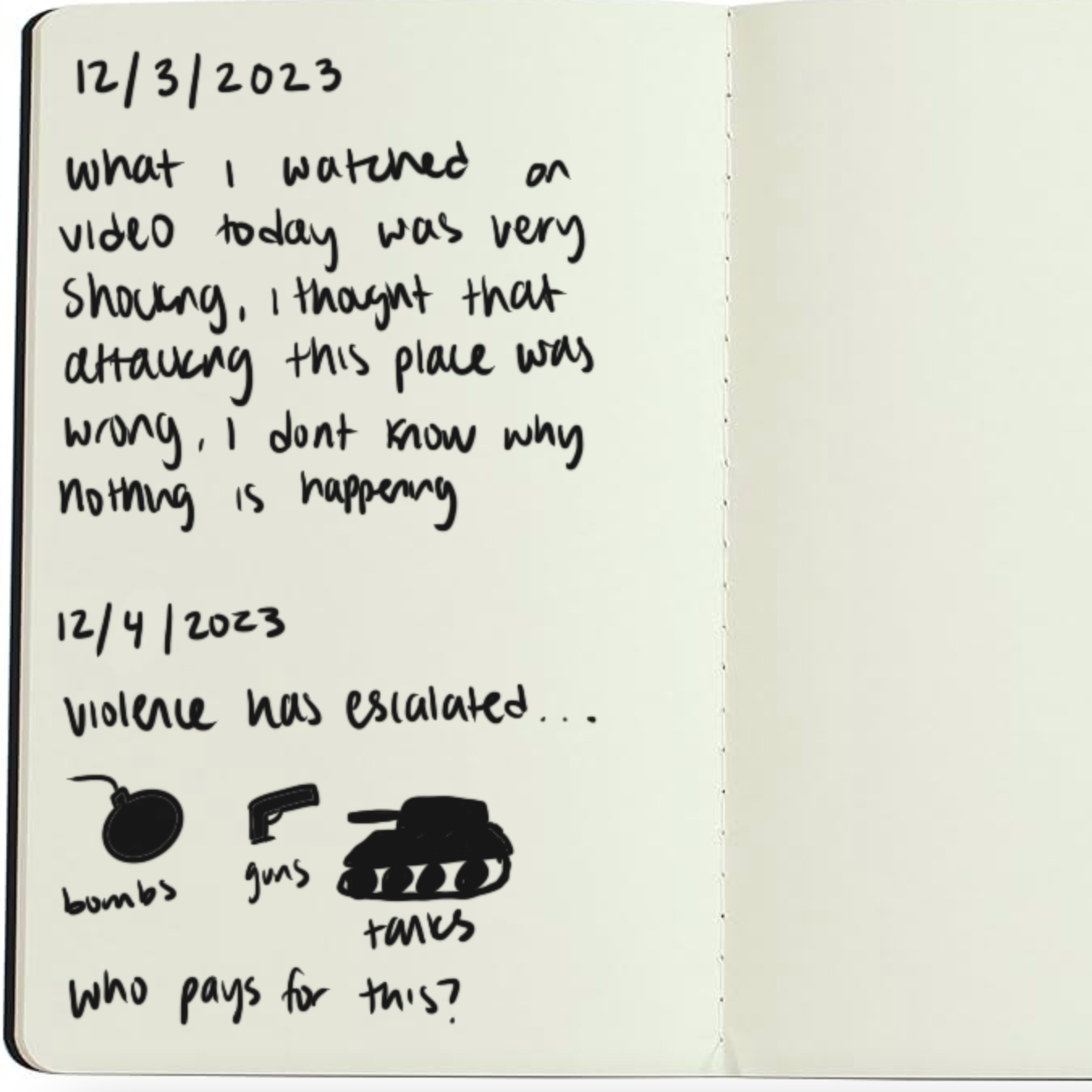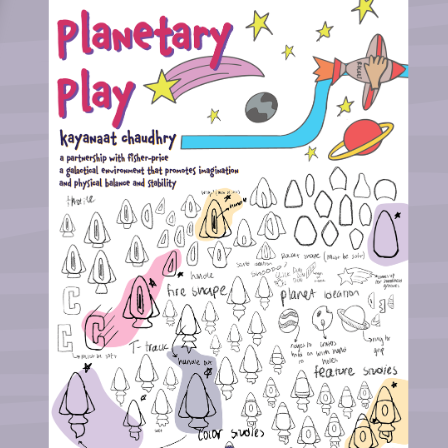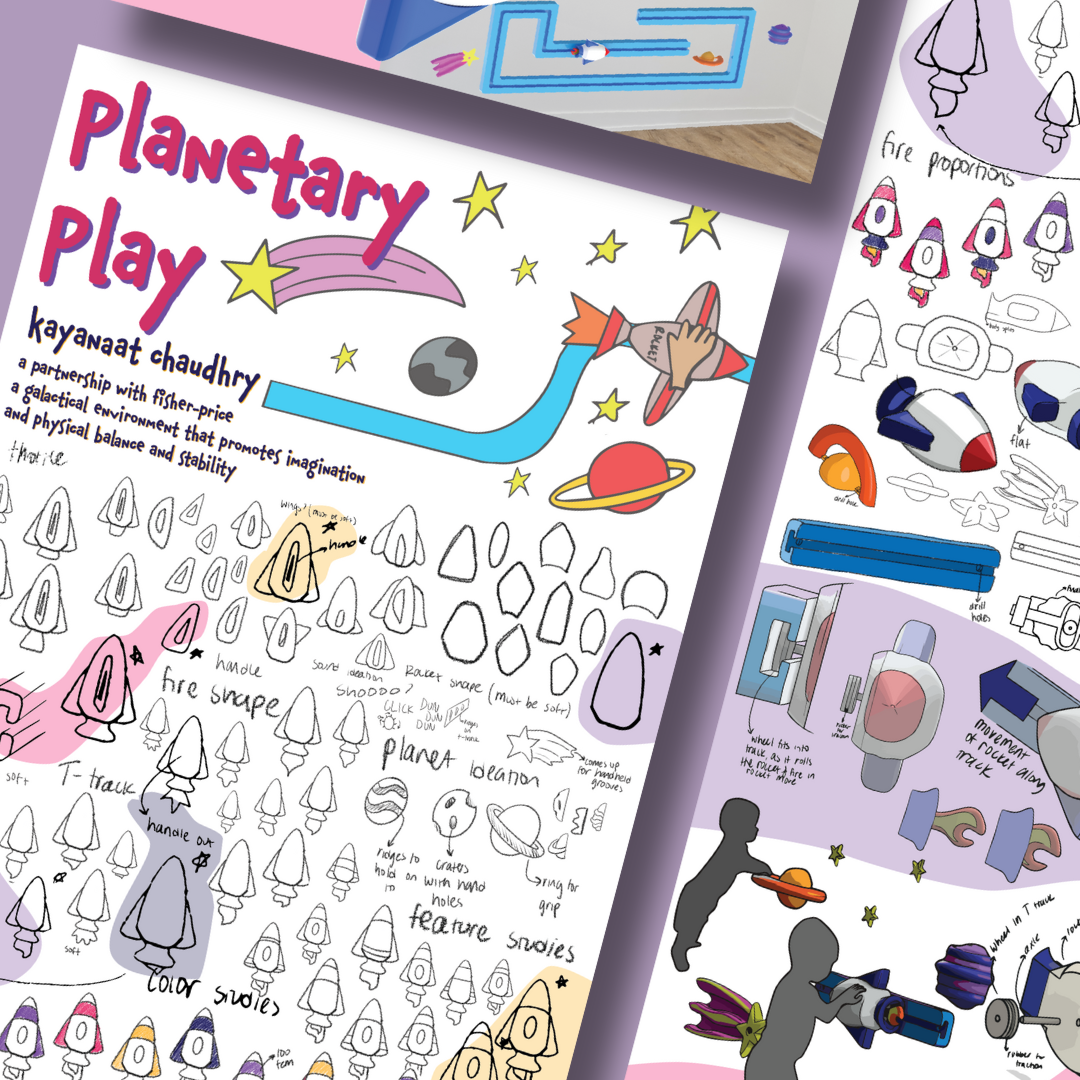What Makes Porches Inviting? is an ethnographic-style research study focused on understanding what makes a porch inviting and what does not. To complete this study, we visited three streets near The Ohio State University multiple times to observe what went on in the situation of porches and conducted a photo analysis of the 195 porches on these streets. At the end of our study, we were left with four insights relating invitation with elevation, nature, color/light, and privacy. We then handed off this research to two of our peers, Erin Shaw and Jude Gill, and they were tasked with creating a homegood for the OSU Design Winter Market using our insights. This research helped in their development of Sensory Stitch which is an interactive and decorative fabric flower display. This research study was conducted in collaboration with Gage Kime.
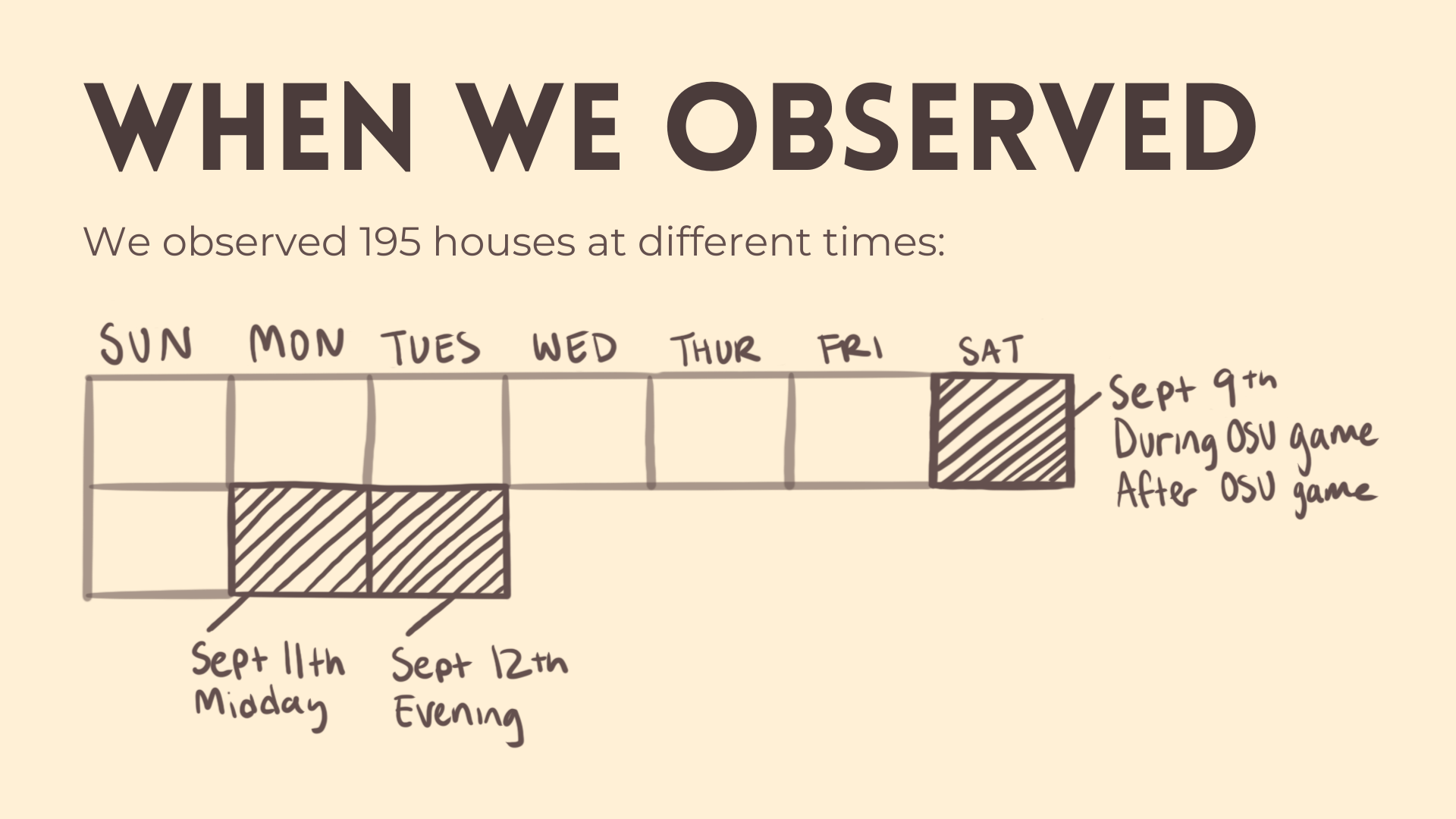
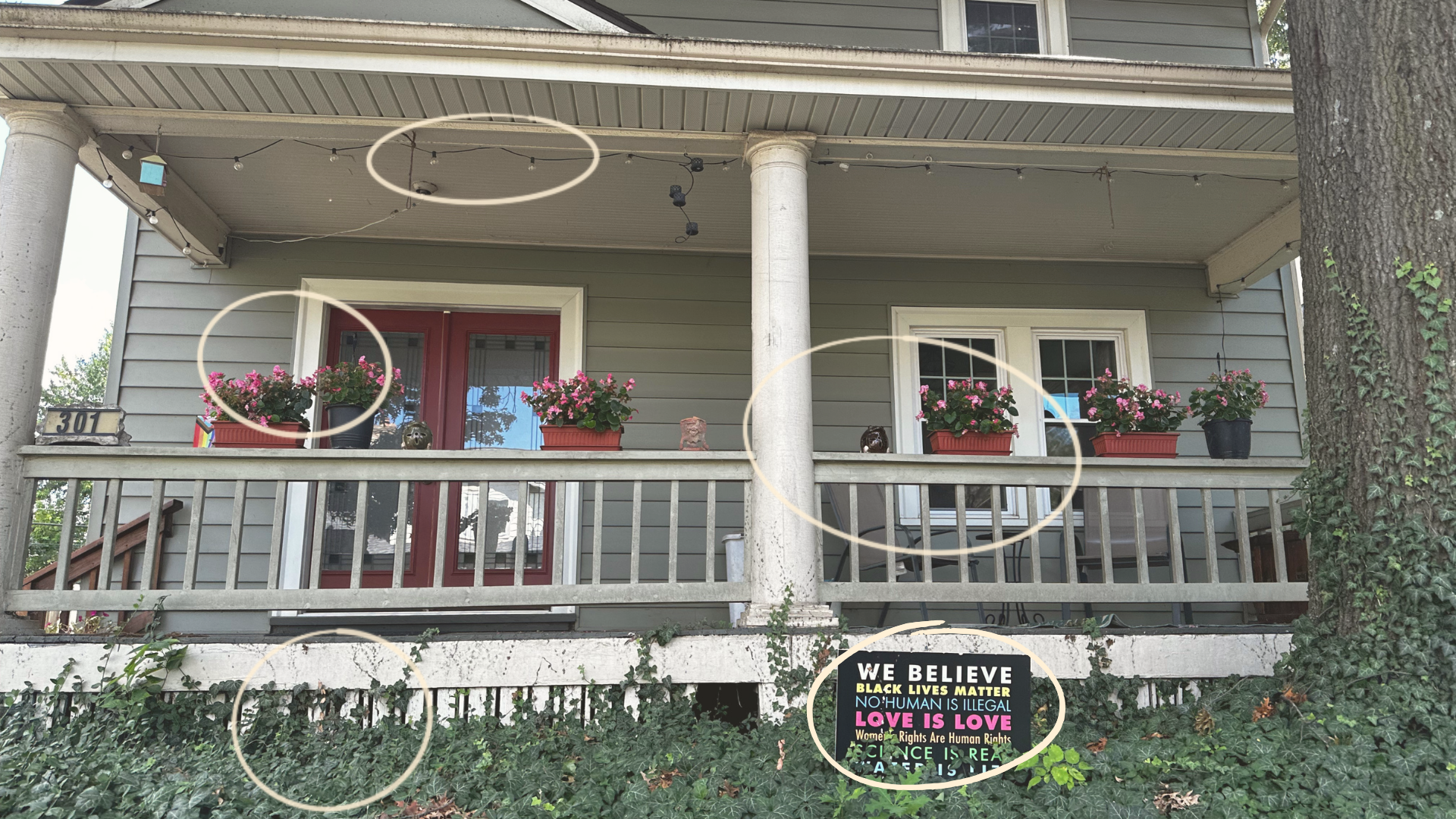
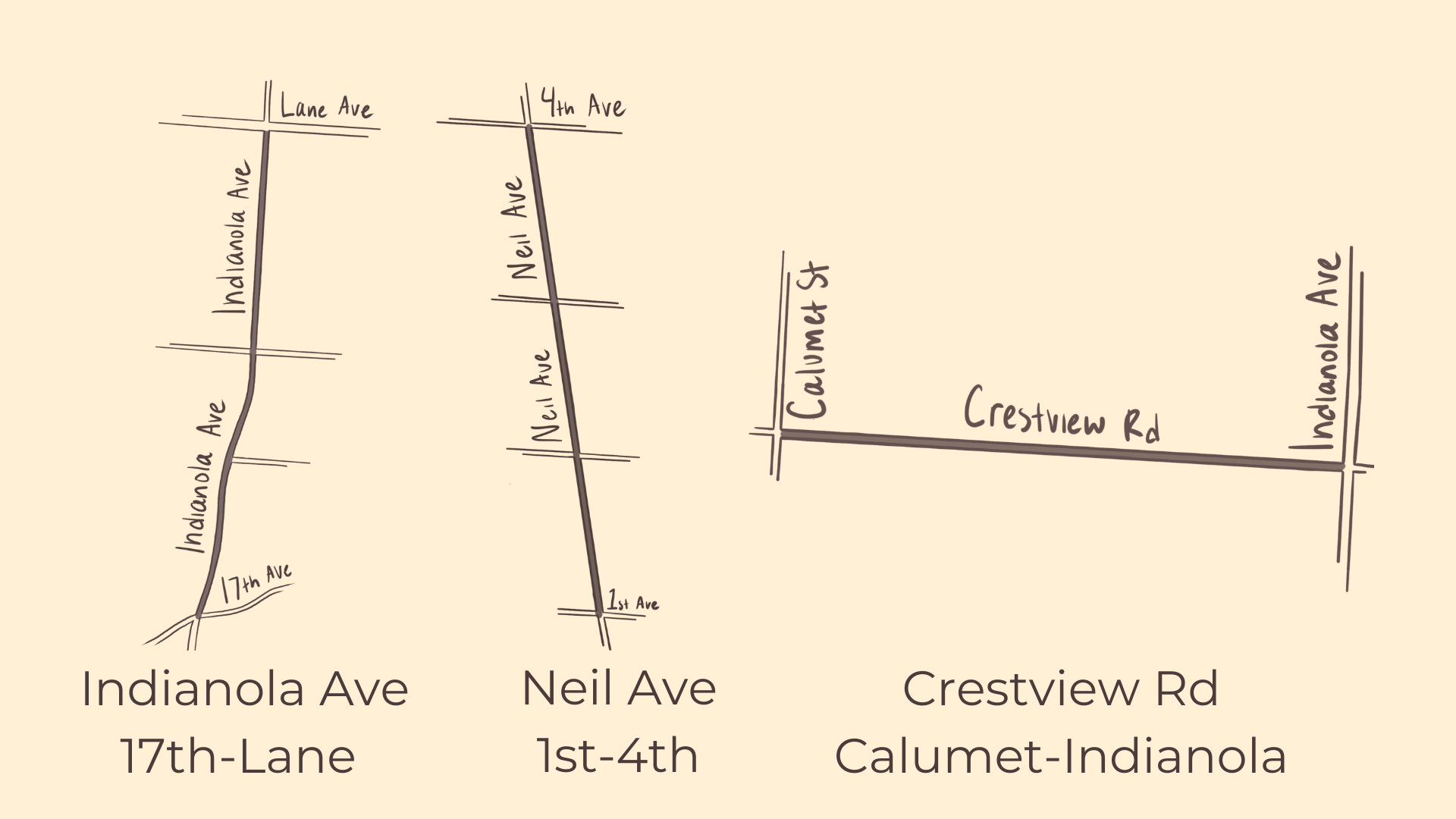
Our research took place over a three week period in September of 2023. We observed 195 houses in three different sites around The Ohio State University and some of the things we took note of were activity, usage, signage, color, decoration, lighting, nature, the architecture of the porch, and more. We also conducted casual interviews with some people who were actively using their porch during our observation schedule. After initial observations and interviews, we conducted a photo analysis in order to classify and categorize the porches and their characteristics further into three categories which were uninviting, semi-inviting, and inviting. This helped us understand how different aspects of the porch contribute to the underlying "soul" of the porch in relation to invitation.
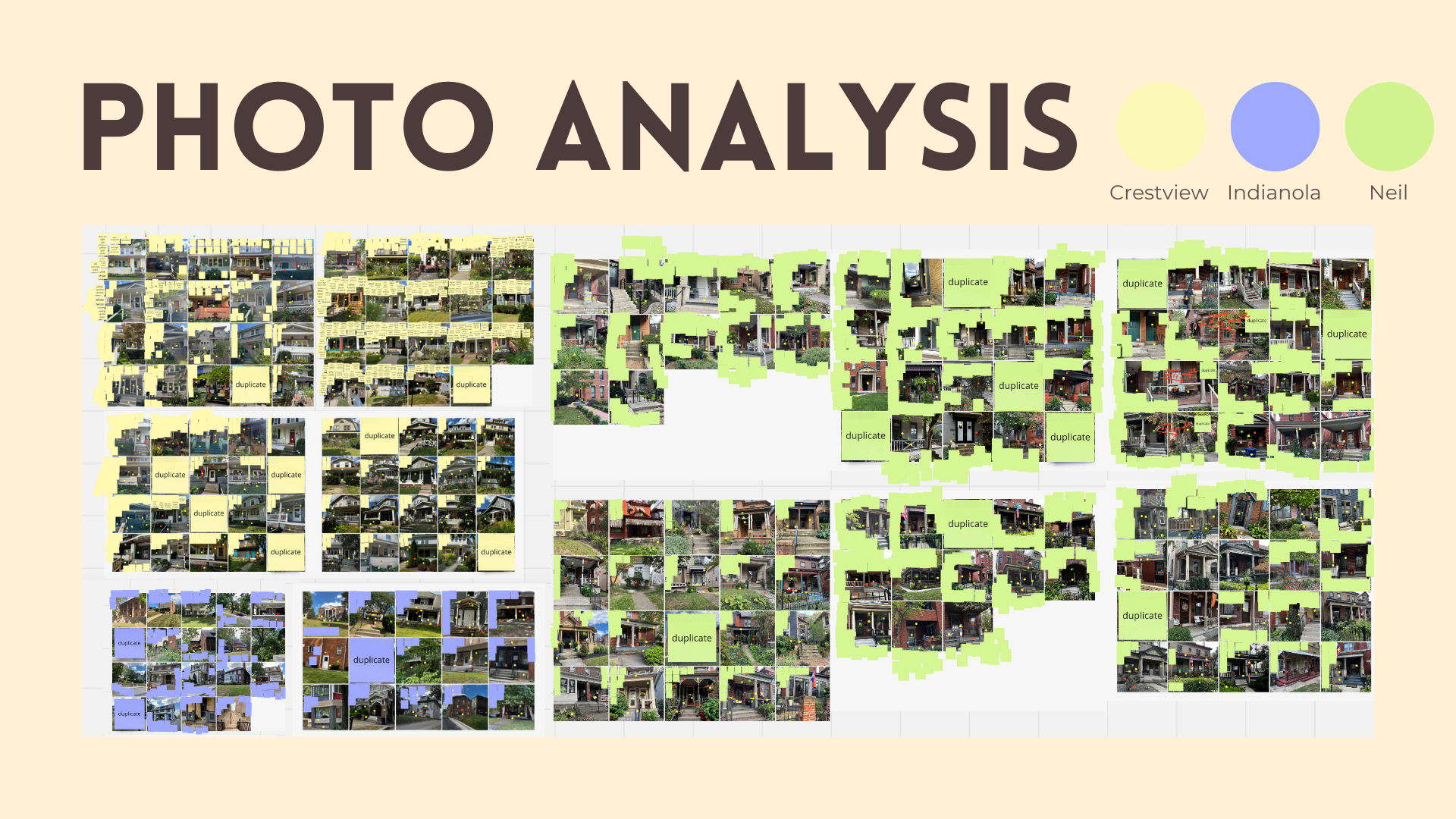
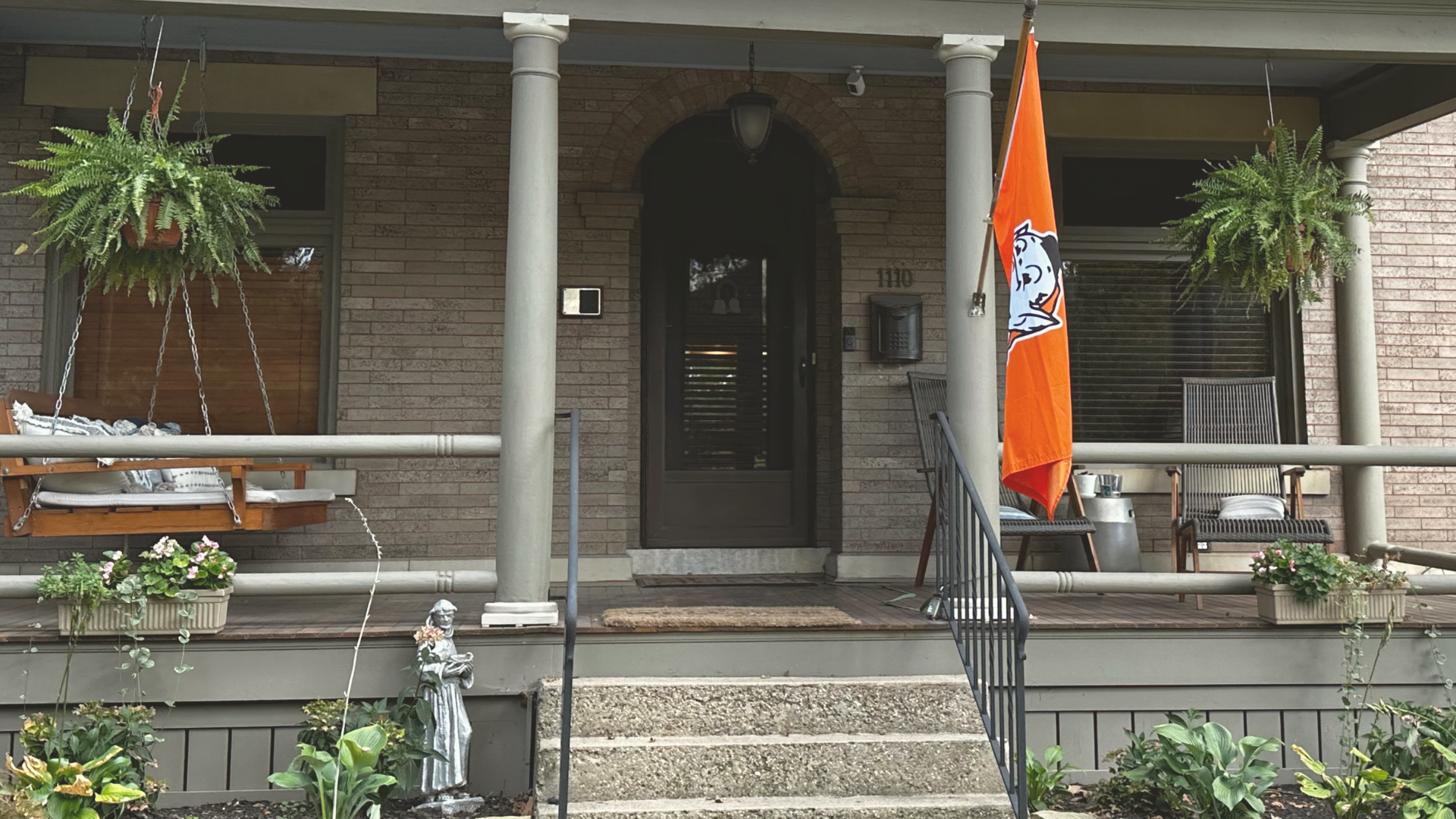
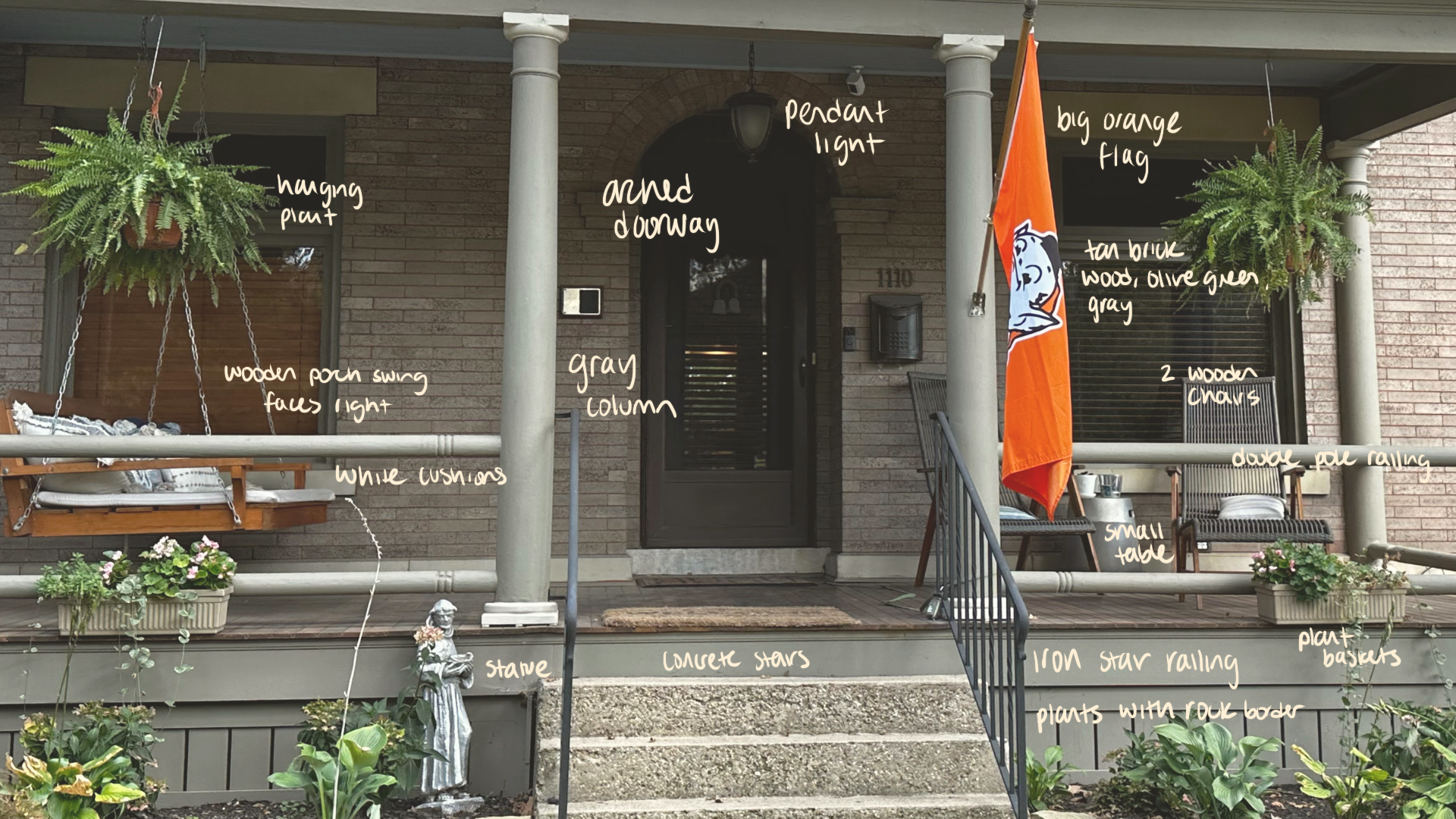
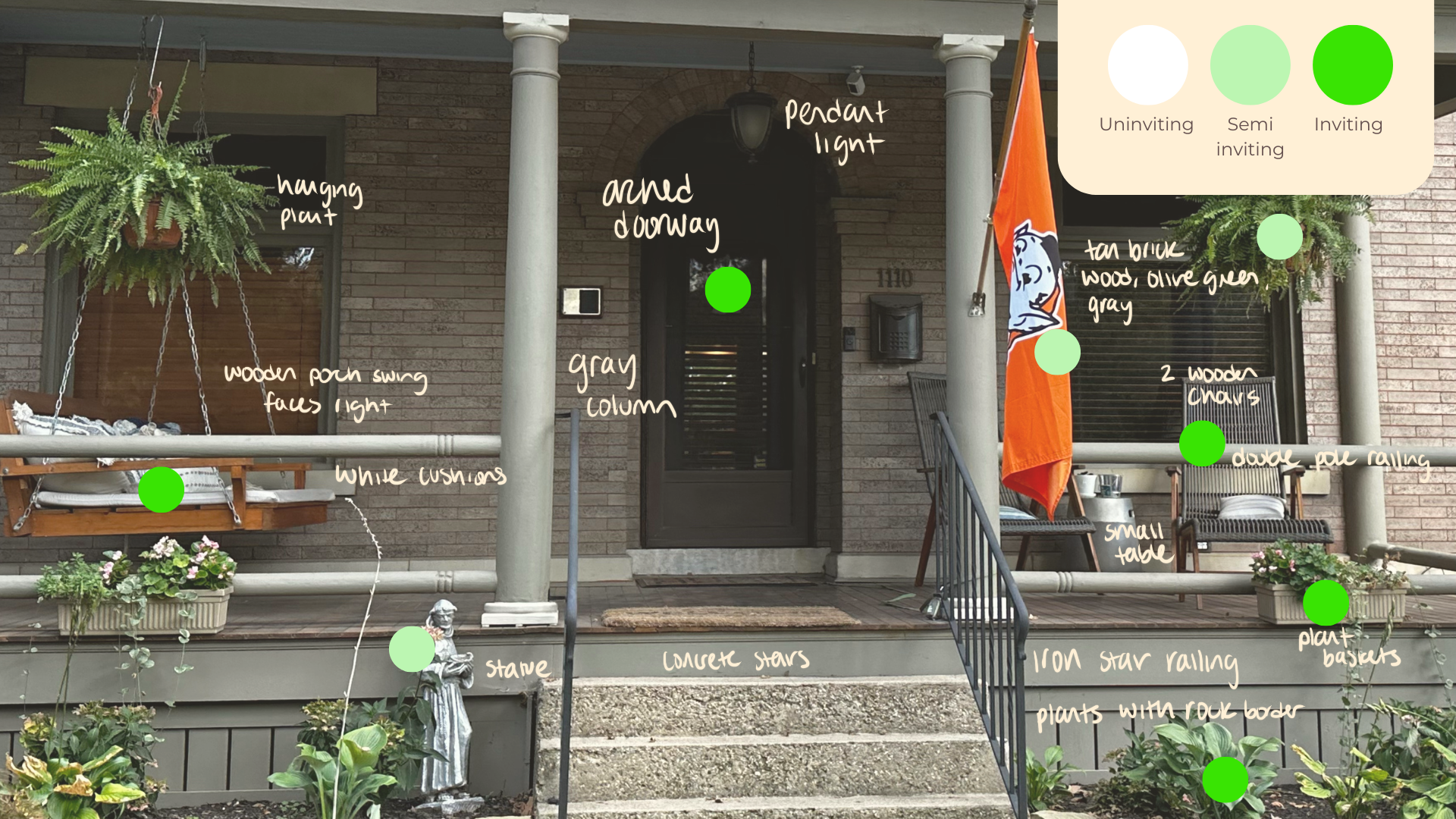
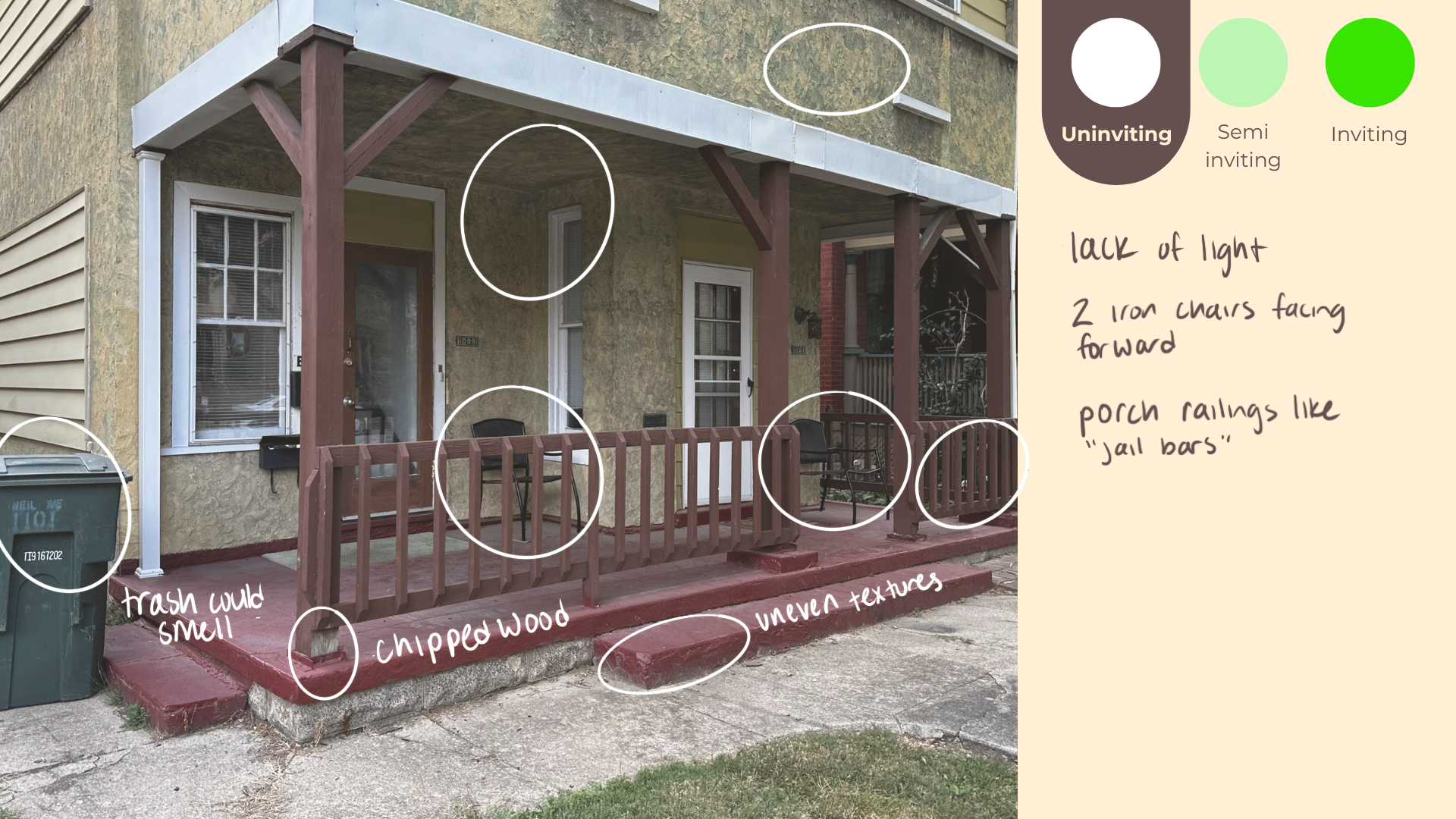
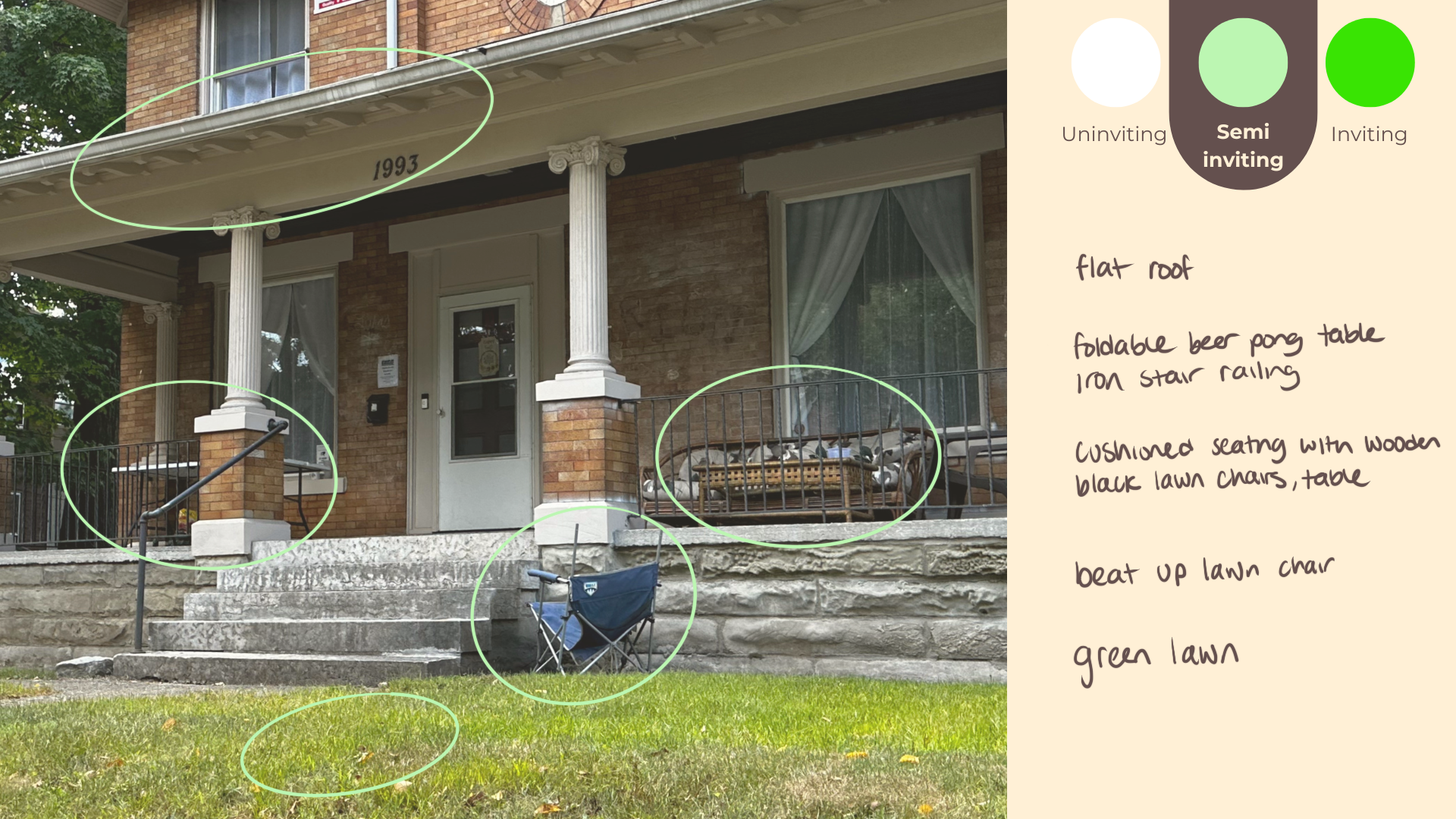
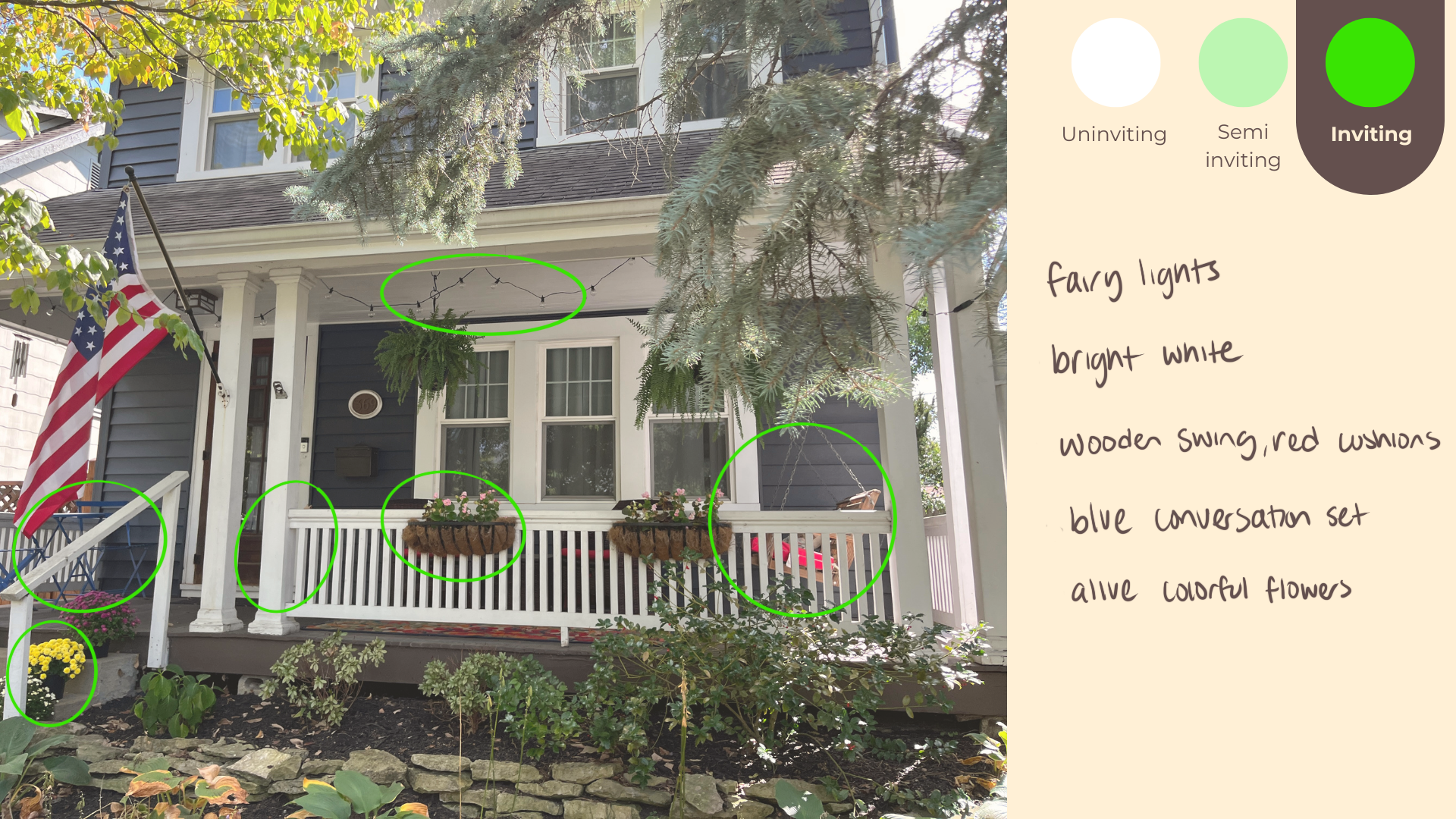
After categorizing all of the porches into their respective level of invitation, we created a map of the three sites and the houses within them based on their respective categories. These maps showed similar ratios of uninviting, semi-inviting, and inviting porches leading us to assume that the neighborhoods did not have an extreme effect on the underlying invitation of the porch. We then took the porches within the three categories and subcategorized their characteristics into groups related to architecture, lighting, nature, and more.
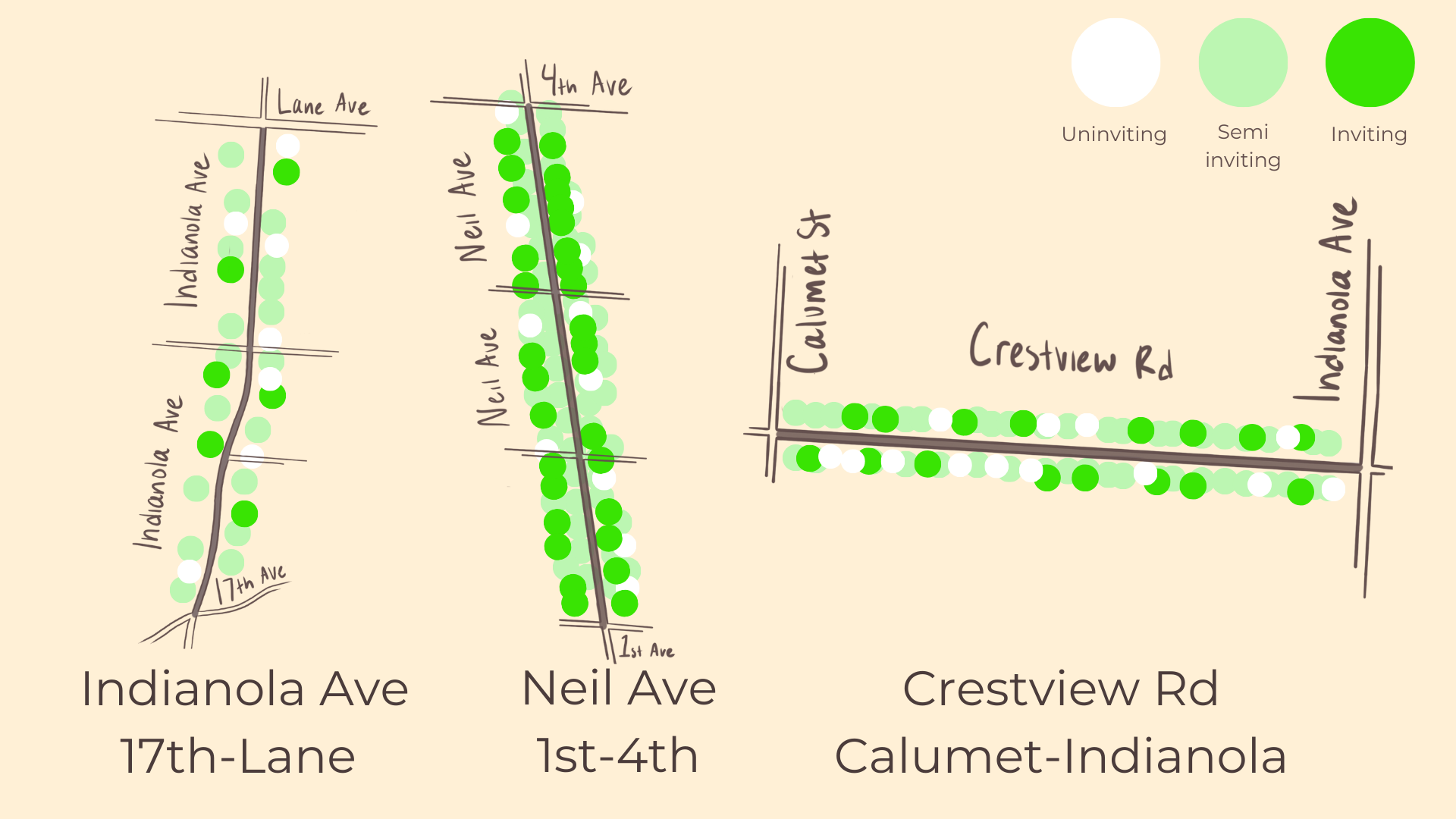
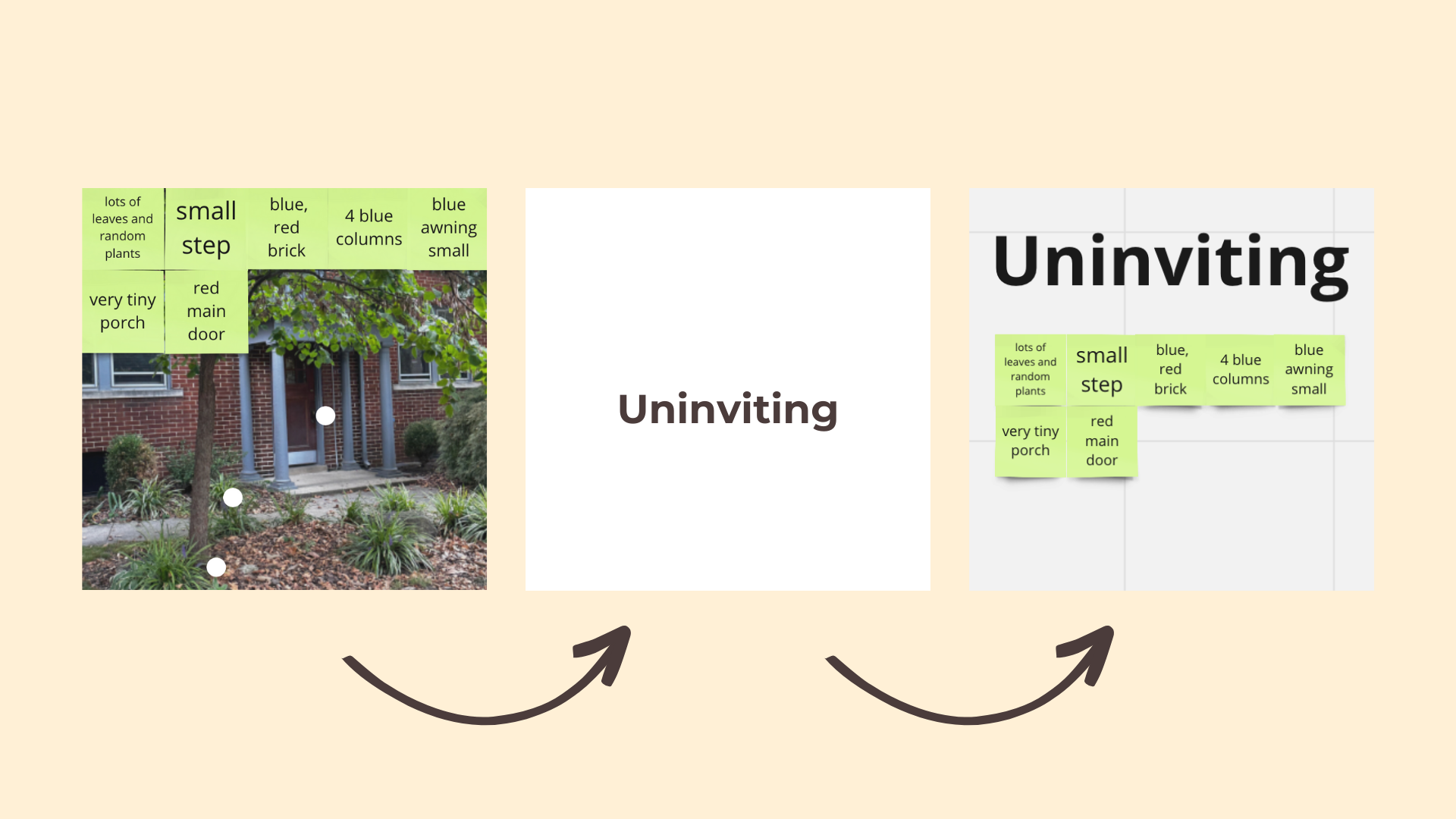
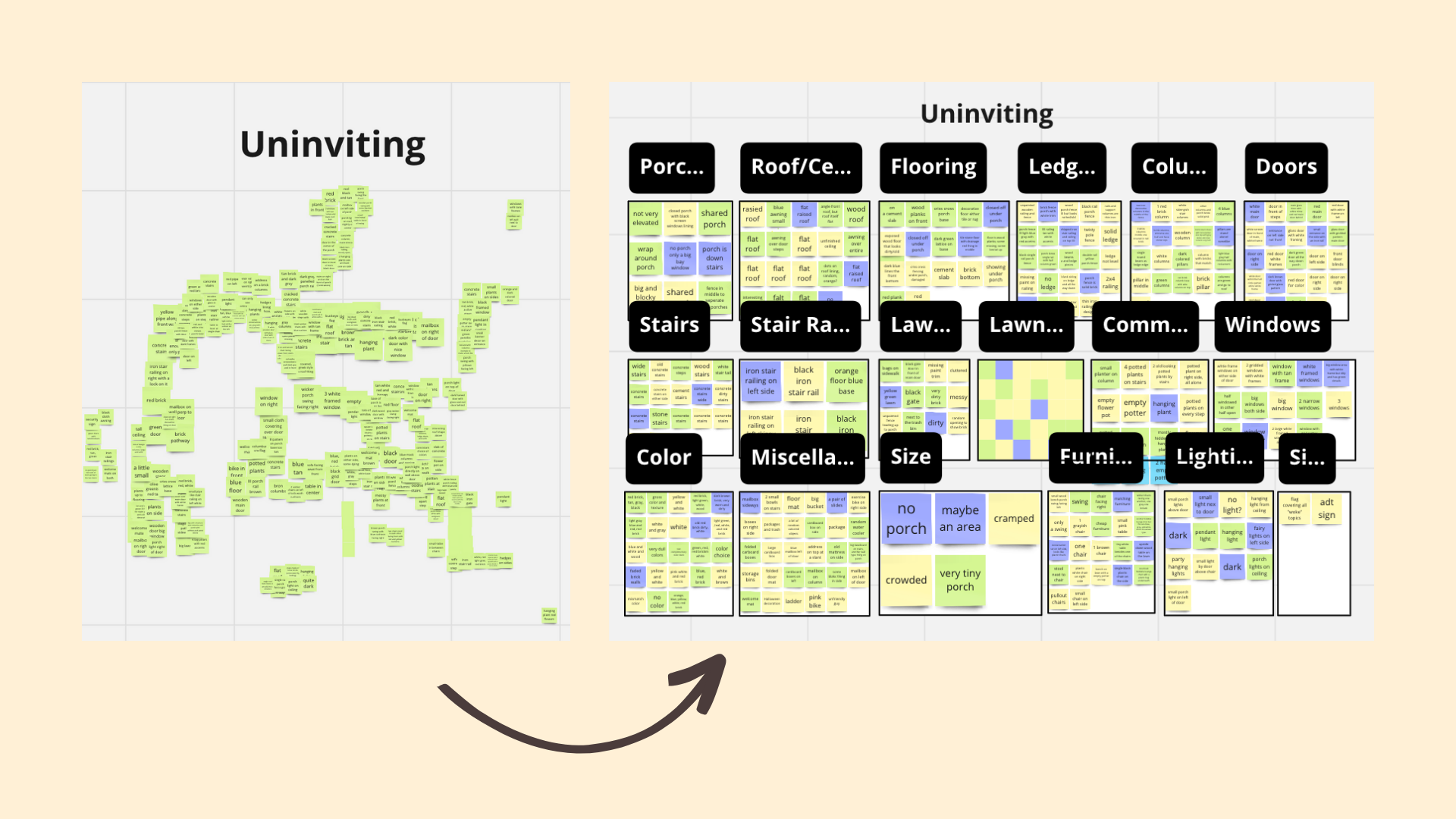
Based on this subcategorization, we were able to cross-analyze and determine the number of times each factor is mentioned in each category and subcategory. This led to the development of four actionable insights surrounding the connection between elevation, nature, light, color, privacy, and increased feelings of invitation. These actionable insights were created based on the cross-comparison of numbers between uninviting and inviting porches and their respective subcategories.
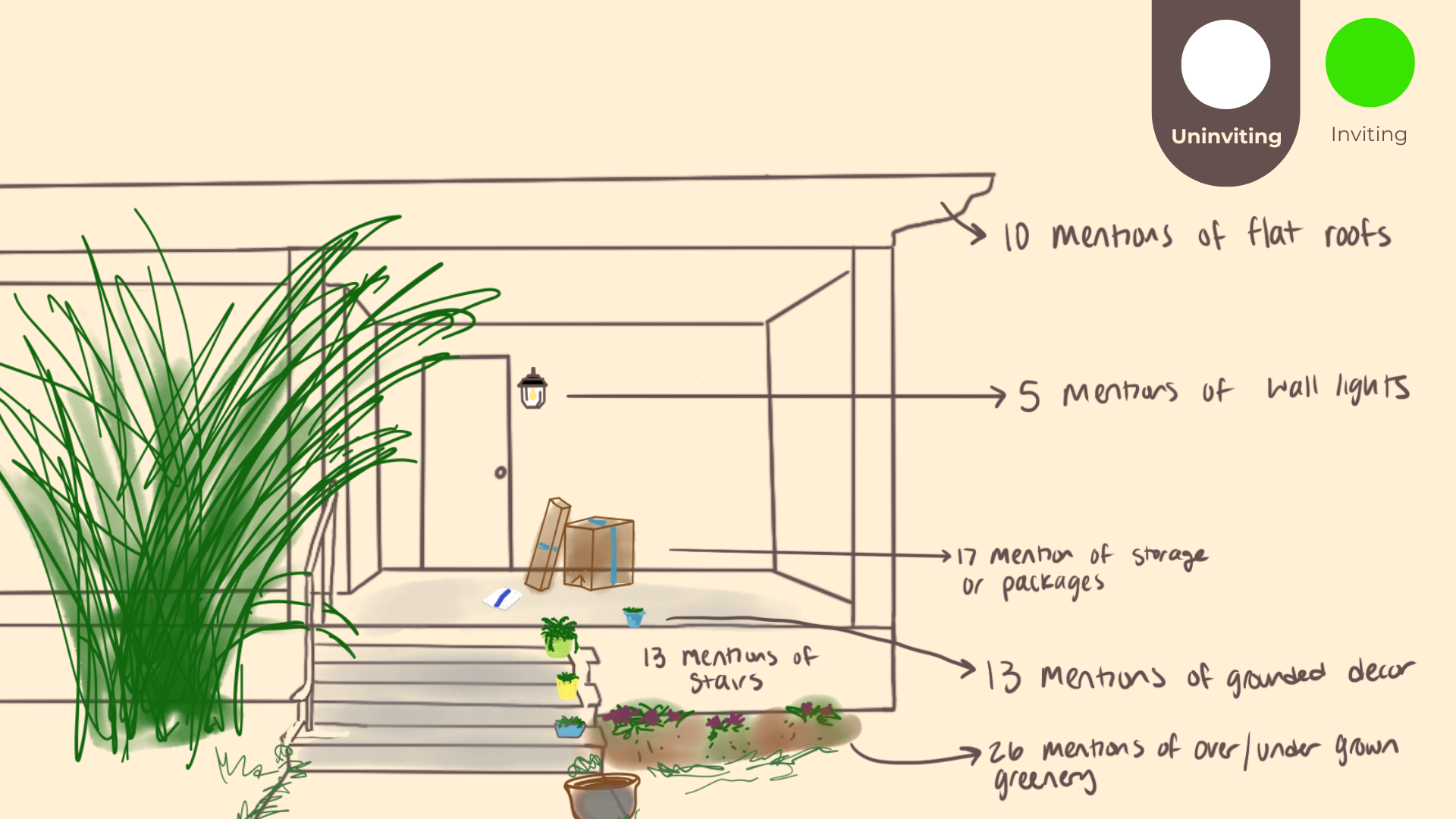
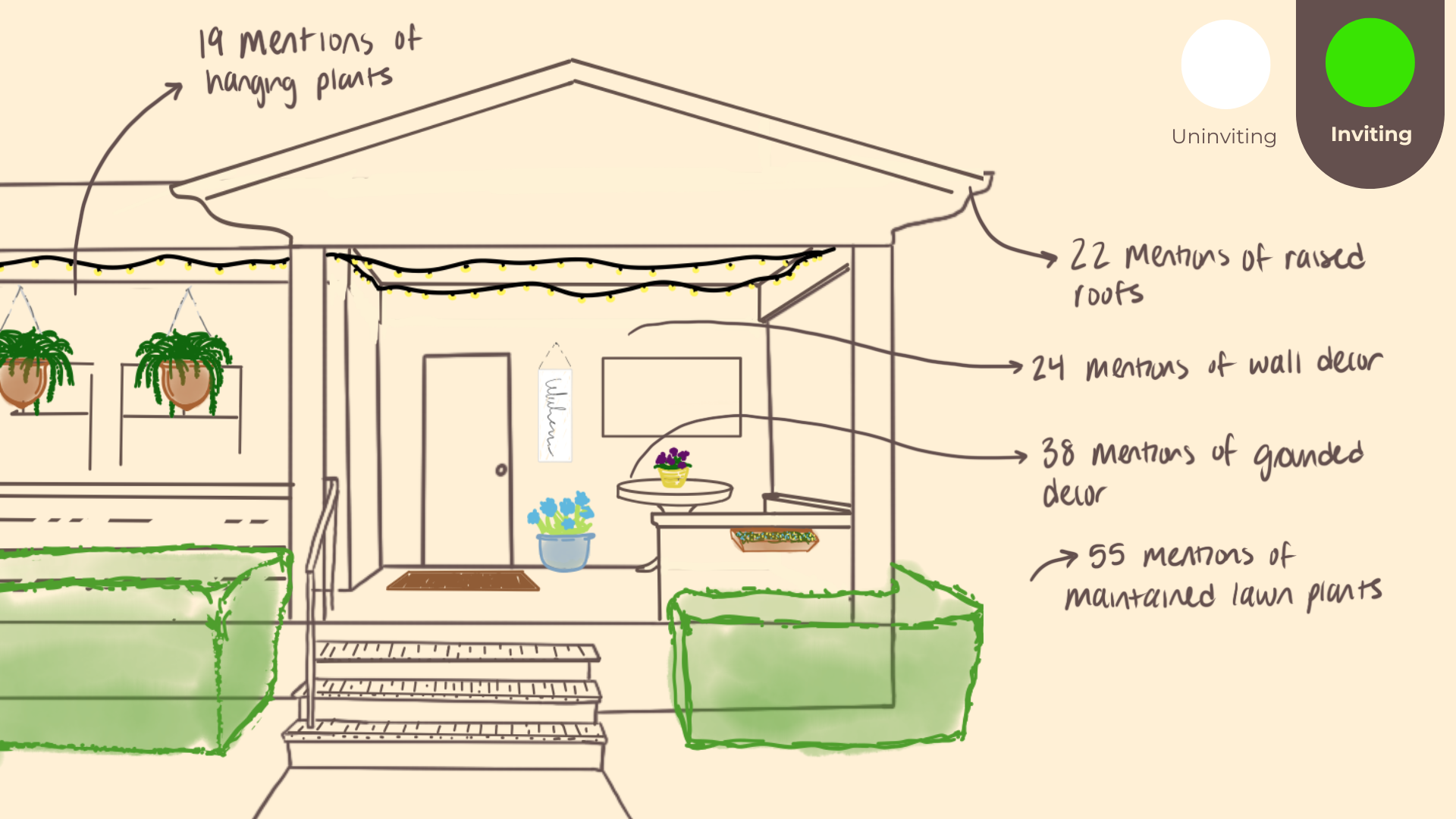
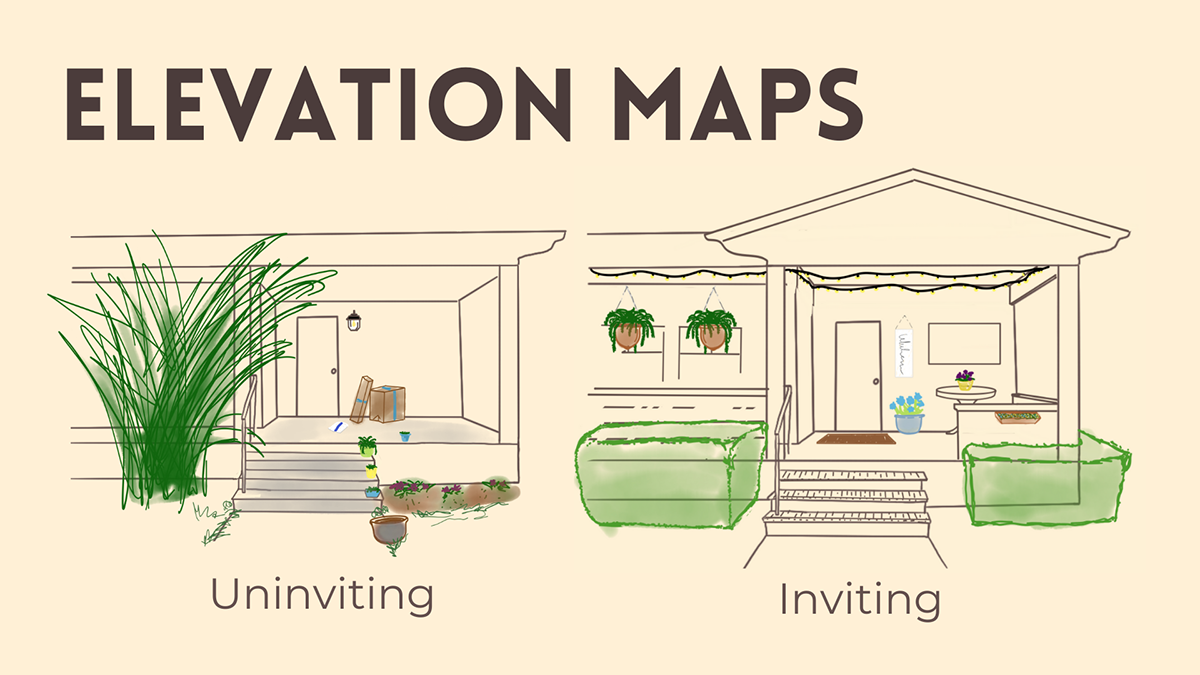
Porches that have more permanent objects at multiple elevations are more inviting, so how might design use elevation and height changes to create comforting environments in the home?
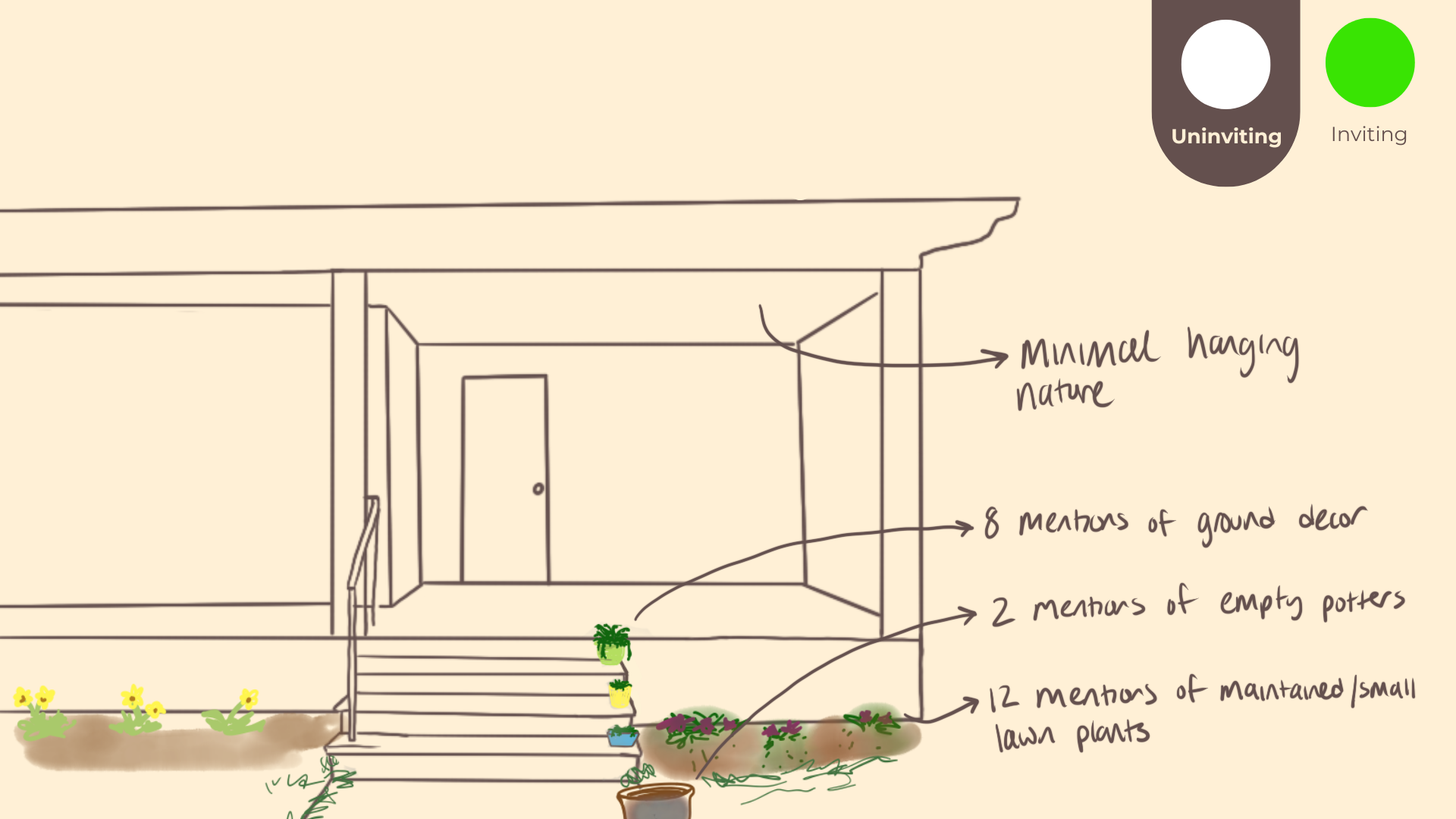
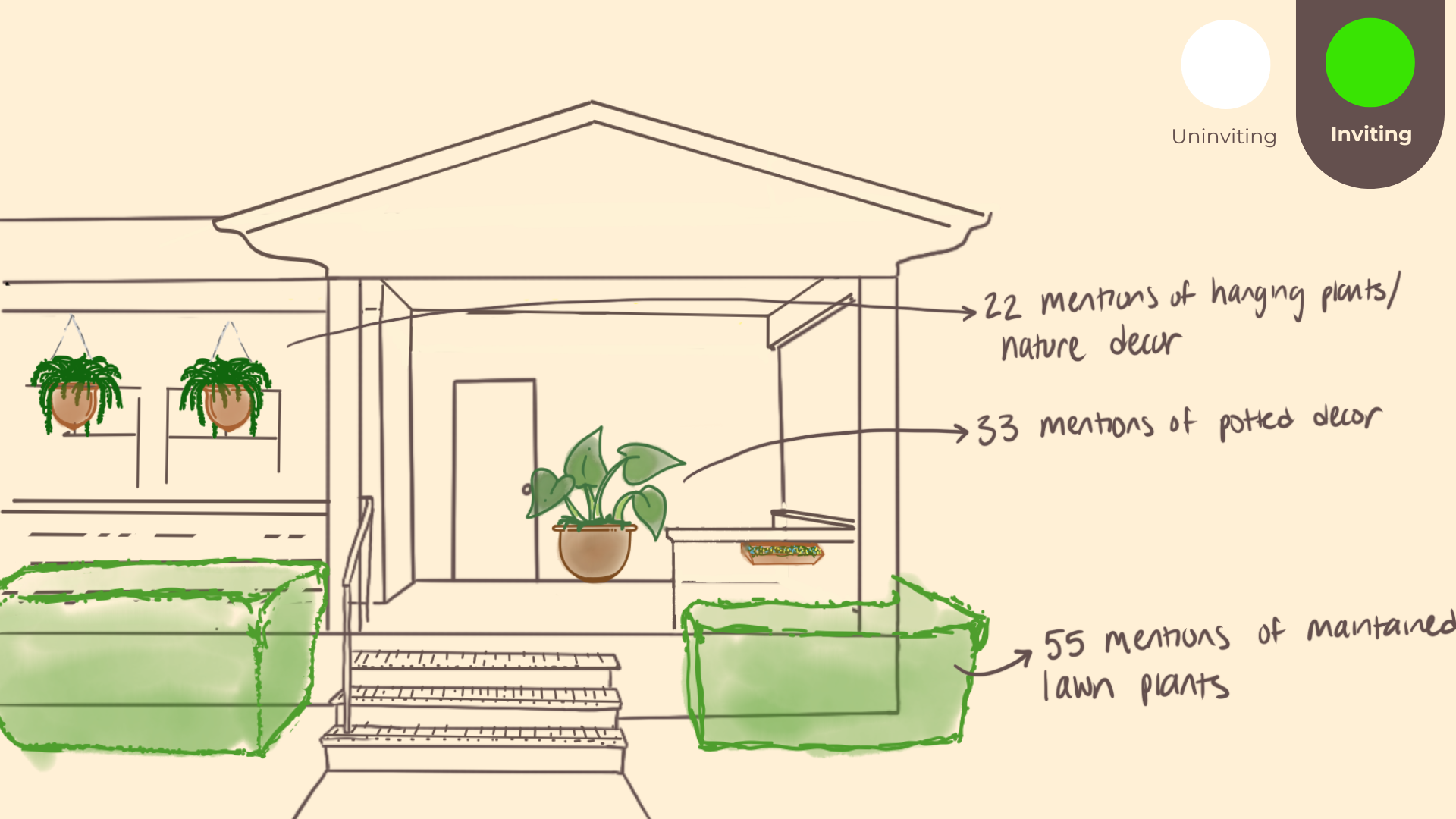
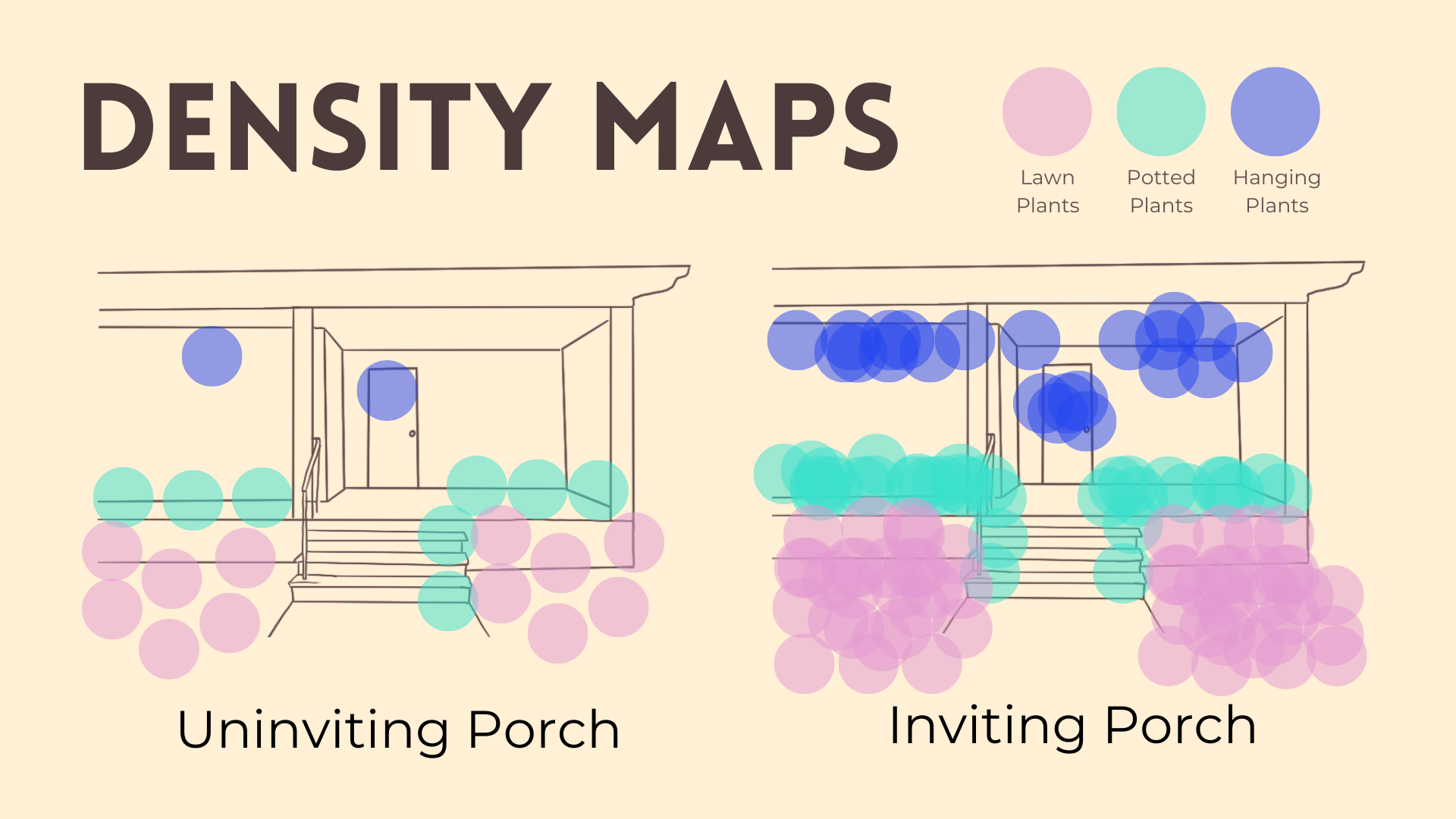
Porches that have maintained greenery are more inviting, so how might design help greenery and nature play a bigger part in the home?
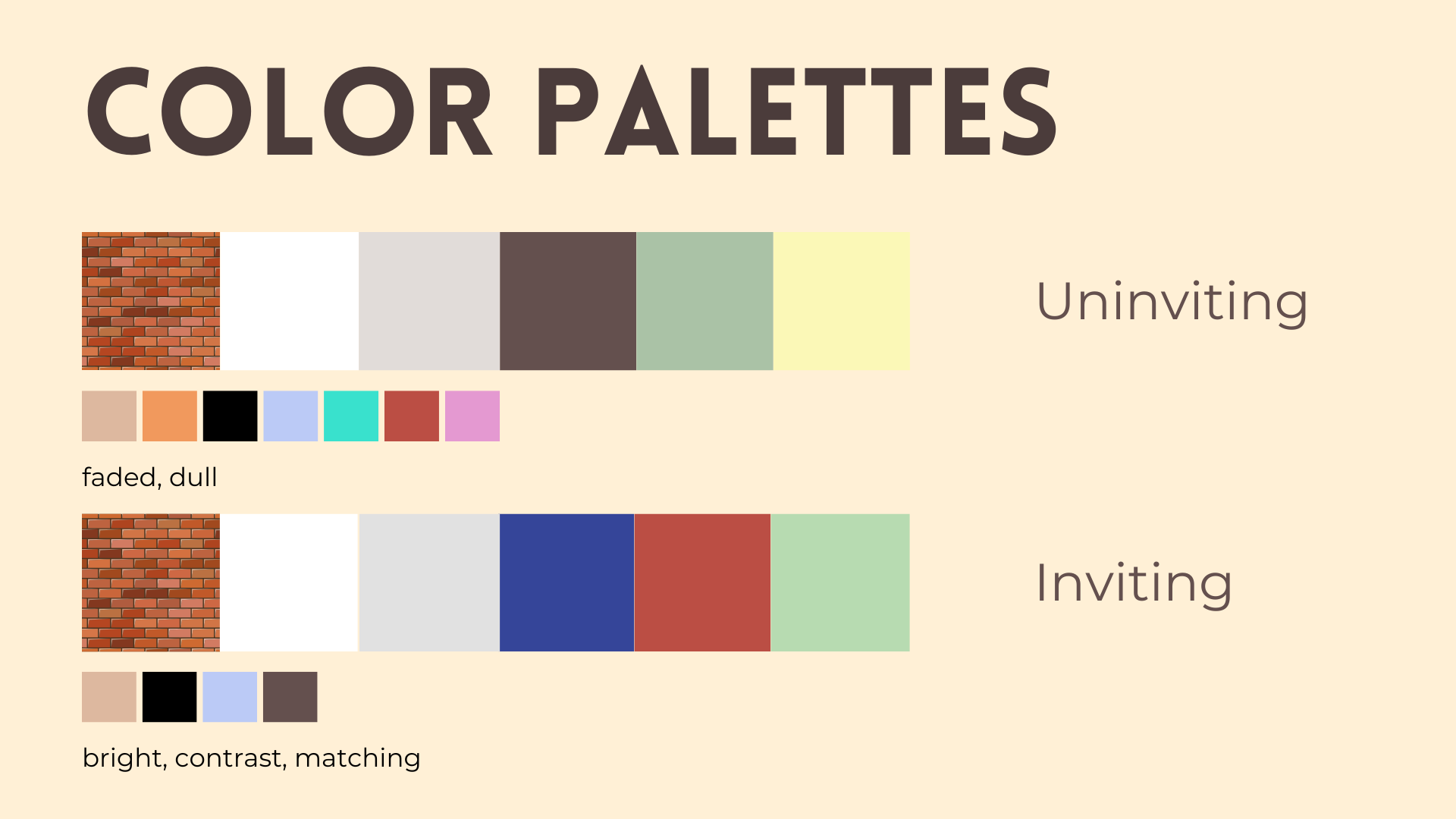
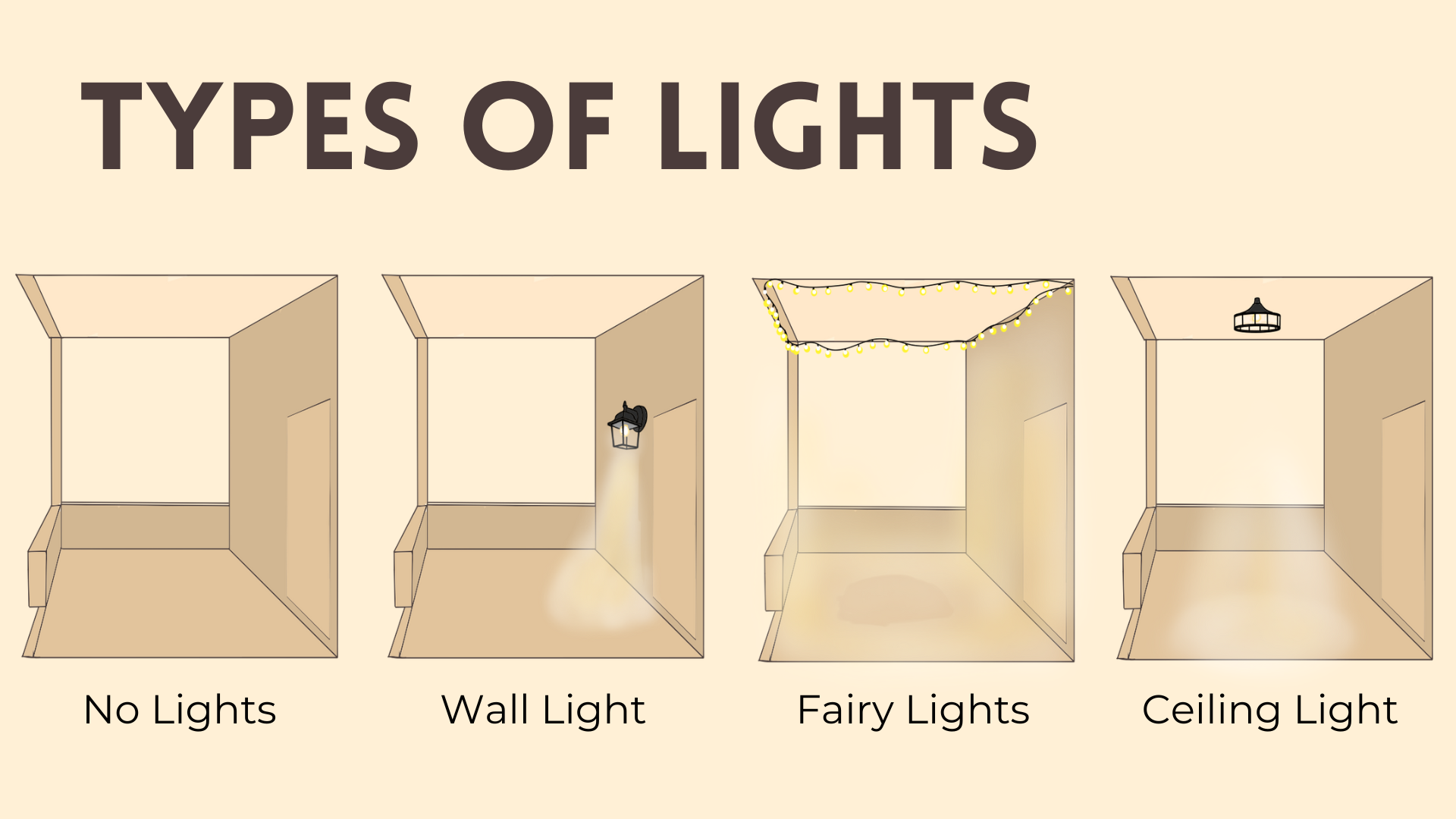
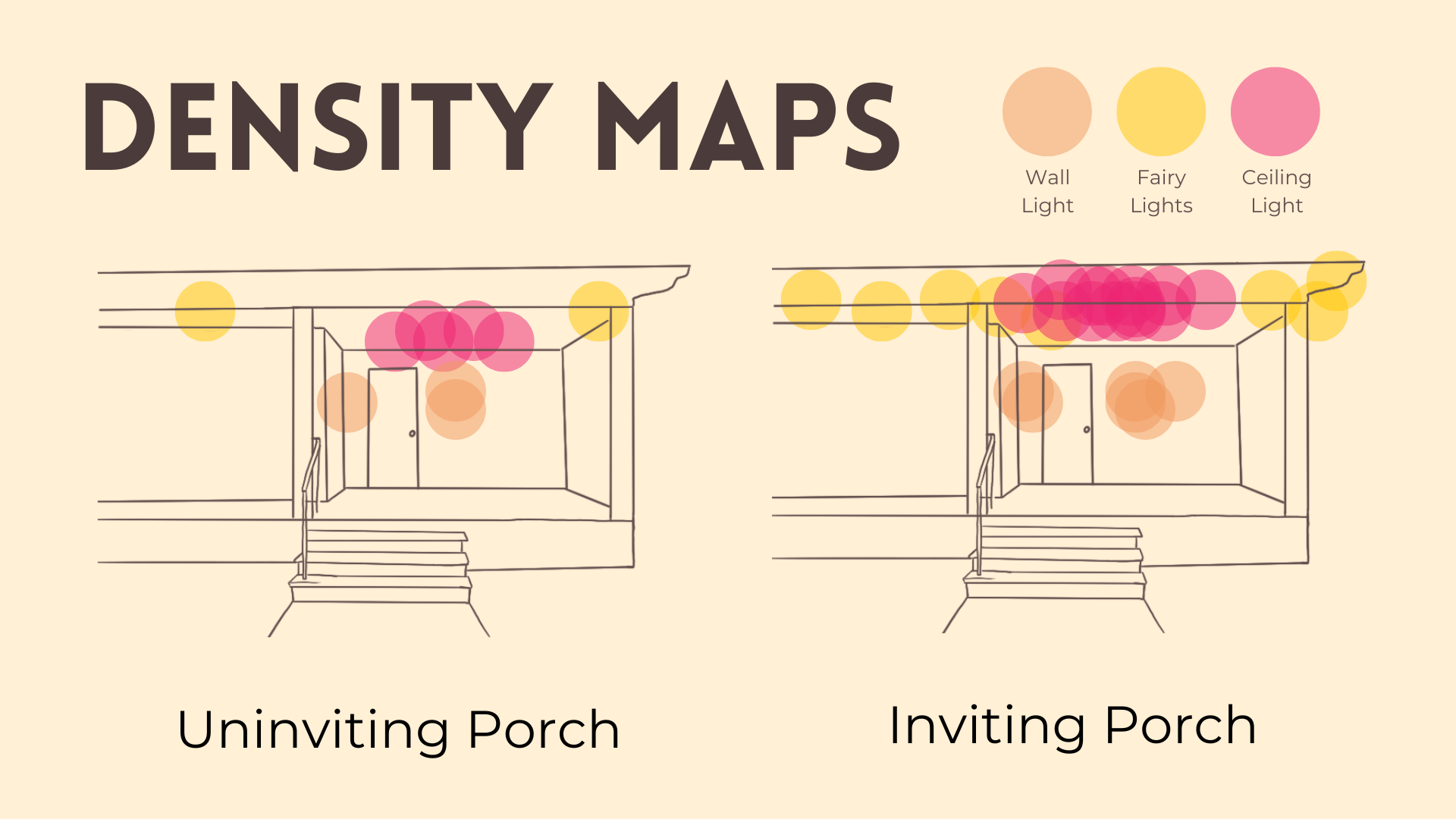
Porches that are well-lit and have brighter and saturated color are more inviting, so how might design manipulate color and light to create inviting environments in the home?
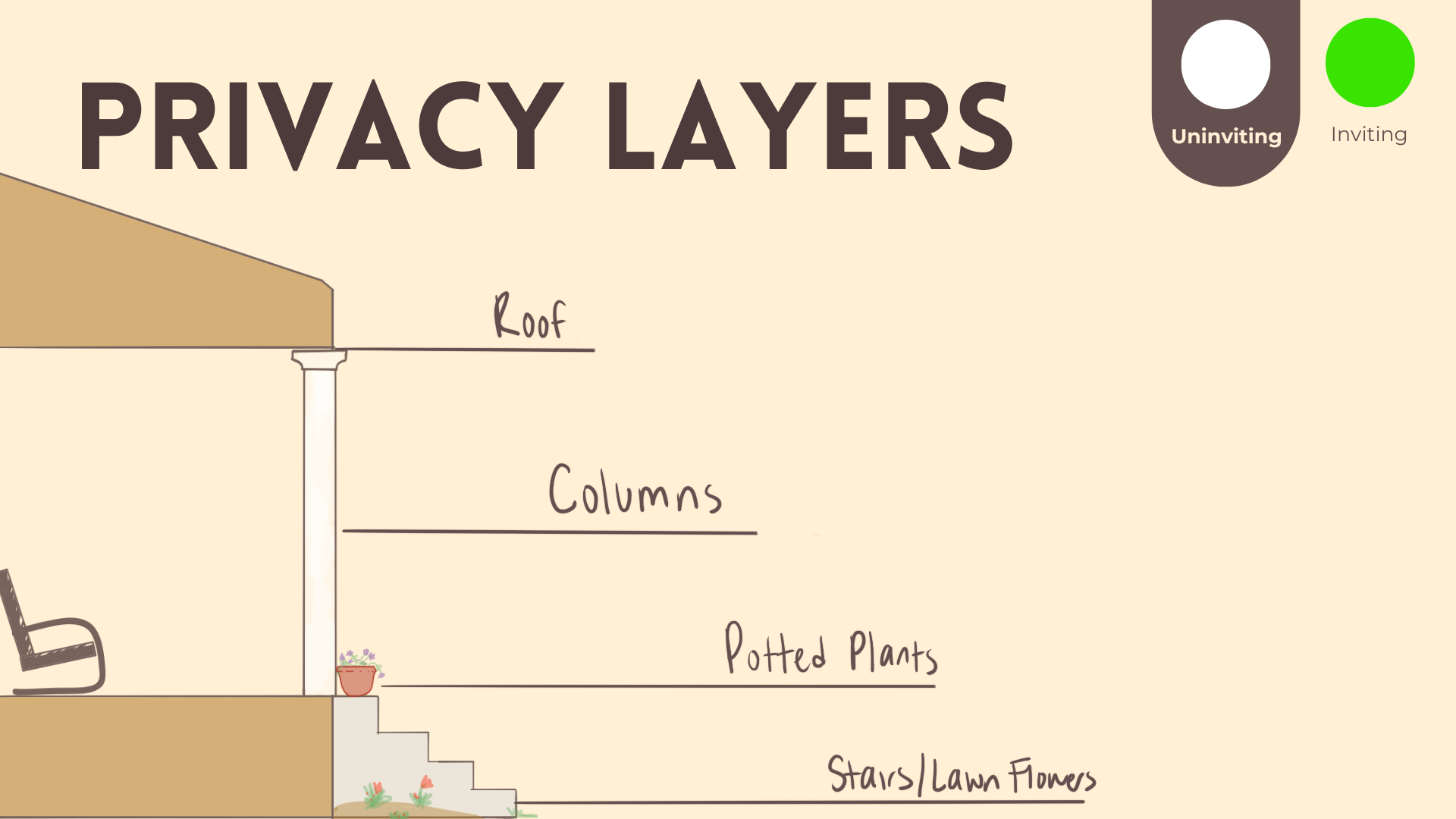
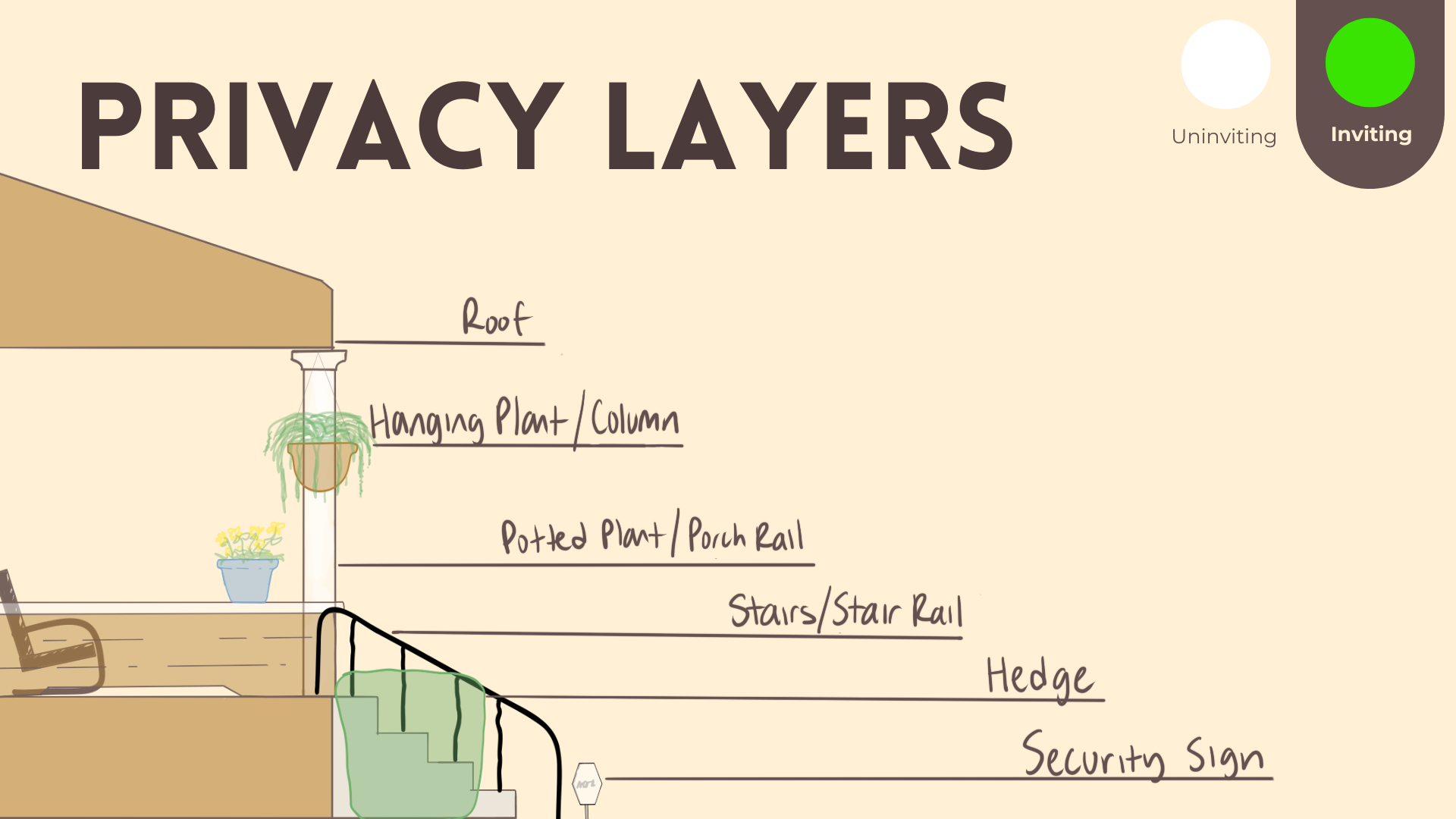
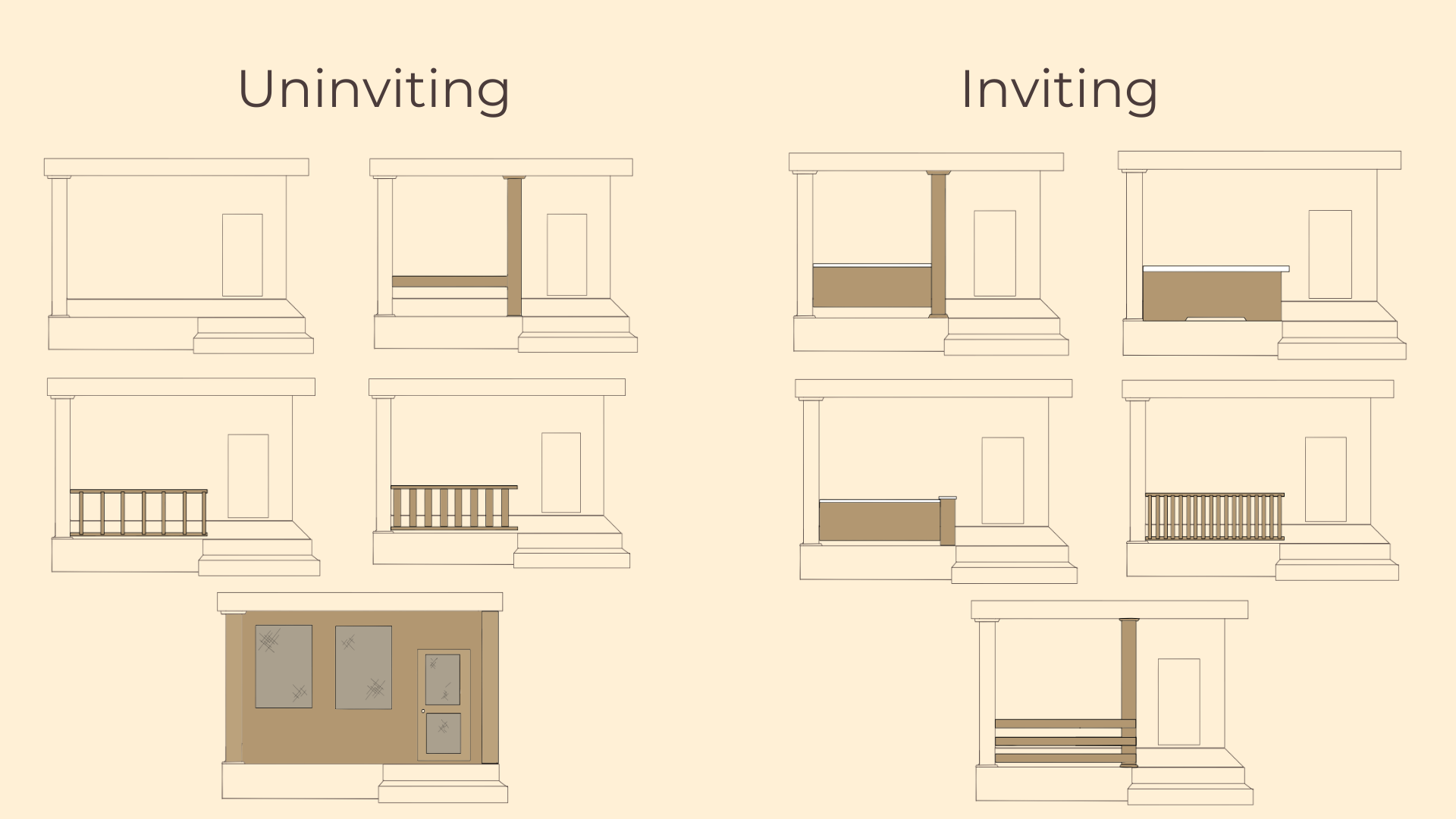
Porches with more implicit privacy are more inviting, so how might design help create invitation through comfortable separations in the home?
view full presentation
